8-hour time-restricted eating linked to a 91% higher risk of cardiovascular death
03/19/24 Editor’s note:
- The research authors have shared their full poster presentation for updated details about their research abstract. Please see the digital file attached, under additional resources below, for these details.
- The most current statistics, reviewed and confirmed by the research authors, are in the poster (please see the digital file attached, under additional resources below) and the news release.
- As with any new science development, patients should always consult with their doctor prior to making changes to their health regimens.
As noted in all American Heart Association scientific meetings news releases, research abstracts are considered preliminary until published in a peer-reviewed scientific journal.
Research Highlights :
- A study of over 20,000 adults found that those who followed an 8-hour time-restricted eating schedule, a type of intermittent fasting, had a 91% higher risk of death from cardiovascular disease.
- People with heart disease or cancer also had an increased risk of cardiovascular death.
- Compared with a standard schedule of eating across 12-16 hours per day, limiting food intake to less than 8 hours per day was not associated with living longer.
Embargoed until 3 p.m. CT/4 p.m. ET , Monday, March 18, 2024
CHICAGO, March 18, 2024 — An analysis of over 20,000 U.S. adults found that people who limited their eating across less than 8 hours per day, a time-restricted eating plan, were more likely to die from cardiovascular disease compared to people who ate across 12-16 hours per day, according to preliminary research presented at the American Heart Association’s Epidemiology and Prevention│Lifestyle and Cardiometabolic Scientific Sessions 2024 , March 18- 21, in Chicago. The meeting offers the latest science on population-based health and wellness and implications for lifestyle.
Time-restricted eating, a type of intermittent fasting, involves limiting the hours for eating to a specific number of hours each day, which may range from a 4- to 12-hour time window in 24 hours. Many people who follow a time-restricted eating diet follow a 16:8 eating schedule, where they eat all their foods in an 8-hour window and fast for the remaining 16 hours each day, the researchers noted. Previous research has found that time-restricted eating improves several cardiometabolic health measures, such as blood pressure, blood glucose and cholesterol levels.
“Restricting daily eating time to a short period, such as 8 hours per day, has gained popularity in recent years as a way to lose weight and improve heart health,” said senior study author Victor Wenze Zhong, Ph.D., a professor and chair of the department of epidemiology and biostatistics at the Shanghai Jiao Tong University School of Medicine in Shanghai, China. “However, the long-term health effects of time-restricted eating, including risk of death from any cause or cardiovascular disease, are unknown.”
In this study, researchers investigated the potential long-term health impact of following an 8-hour time-restricted eating plan. They reviewed information about dietary patterns for participants in the annual 2003-2018 National Health and Nutrition Examination Surveys (NHANES) in comparison to data about people who died in the U.S., from 2003 through December 2019, from the Centers for Disease Control and Prevention’s National Death Index database.
The analysis found:
- People who followed a pattern of eating all of their food across less than 8 hours per day had a 91% higher risk of death due to cardiovascular disease.
- The increased risk of cardiovascular death was also seen in people living with heart disease or cancer.
- Among people with existing cardiovascular disease, an eating duration of no less than 8 but less than 10 hours per day was also associated with a 66% higher risk of death from heart disease or stroke.
- Time-restricted eating did not reduce the overall risk of death from any cause.
- An eating duration of more than 16 hours per day was associated with a lower risk of cancer mortality among people with cancer.
“We were surprised to find that people who followed an 8-hour, time-restricted eating schedule were more likely to die from cardiovascular disease. Even though this type of diet has been popular due to its potential short-term benefits, our research clearly shows that, compared with a typical eating time range of 12-16 hours per day, a shorter eating duration was not associated with living longer,” Zhong said.
“It’s crucial for patients, particularly those with existing heart conditions or cancer, to be aware of the association between an 8-hour eating window and increased risk of cardiovascular death. Our study’s findings encourage a more cautious, personalized approach to dietary recommendations, ensuring that they are aligned with an individual’s health status and the latest scientific evidence,” he continued. “Although the study identified an association between an 8-hour eating window and cardiovascular death, this does not mean that time-restricted eating caused cardiovascular death.” Study details and background:
- The study included approximately 20,000 adults in the U.S. with an average age of 49 years.
- Study participants were followed for a median length of 8 years and maximum length of 17 years.
- The study included data for NHANES participants who were at least 20 years old at enrollment, between 2003-2018, and had completed two 24-hour dietary recall questionnaires within the first year of enrollment.
- Approximately half of the participants self-identified as men, and half self-identified as women. 73.3% of the participants self-identified as non-Hispanic white adults, 11% self-identified as Hispanic adults, 8% self-identified as non-Hispanic Black adults and 6.9% of adults self-identified as another racial category, including mixed-race adults and adults of other non-Hispanic races.
The study’s limitations included its reliance on self-reported dietary information, which may be affected by participant’s memory or recall and may not accurately assess typical eating patterns. Factors that may also play a role in health, outside of daily duration of eating and cause of death, were not included in the analysis.
Future research may examine the biological mechanisms that underly the associations between a time-restricted eating schedule and adverse cardiovascular outcomes, and whether these findings are similar for people who live in other parts of the world, the authors noted.
“Overall, this study suggests that time-restricted eating may have short-term benefits but long-term adverse effects. When the study is presented in its entirety, it will be interesting and helpful to learn more of the details of the analysis,” said Christopher D. Gardner, Ph.D., FAHA, the Rehnborg Farquhar Professor of Medicine at Stanford University in Stanford, California, and chair of the writing committee for the Association’s 2023 scientific statement, Popular Dietary Patterns: Alignment with American Heart Association 2021 Dietary Guidance .
“One of those details involves the nutrient quality of the diets typical of the different subsets of participants. Without this information, it cannot be determined if nutrient density might be an alternate explanation to the findings that currently focus on the window of time for eating. Second, it needs to be emphasized that categorization into the different windows of time-restricted eating was determined on the basis of just two days of dietary intake,” he said.
“It will also be critical to see a comparison of demographics and baseline characteristics across the groups that were classified into the different time-restricted eating windows – for example, was the group with the shortest time-restricted eating window unique compared to people who followed other eating schedules, in terms of weight, stress, traditional cardiometabolic risk factors or other factors associated with adverse cardiovascular outcomes? This additional information will help to better understand the potential independent contribution of the short time-restricted eating pattern reported in this interesting and provocative abstract.”
Co-authors, their disclosures and funding sources are listed in the abstract.
Statements and conclusions of studies that are presented at the American Heart Association’s scientific meetings are solely those of the study authors and do not necessarily reflect the Association’s policy or position. The Association makes no representation or guarantee as to their accuracy or reliability. Abstracts presented at the Association’s scientific meetings are not peer-reviewed, rather, they are curated by independent review panels and are considered based on the potential to add to the diversity of scientific issues and views discussed at the meeting. The findings are considered preliminary until published as a full manuscript in a peer-reviewed scientific journal.
The Association receives funding primarily from individuals; foundations and corporations (including pharmaceutical, device manufacturers and other companies) also make donations and fund specific Association programs and events. The Association has strict policies to prevent these relationships from influencing the science content. Revenues from pharmaceutical and biotech companies, device manufacturers and health insurance providers and the Association’s overall financial information are here .
Additional Resources:
- Poster at EPI-Lifestyle 2024 (PDF): Association of 8-Hour Time-Restricted Eating with All-Cause and Cause-Specific Mortality
- Multimedia is available on the right column of the release link https://newsroom.heart.org/news/8-hour-time-restricted-eating-linked-to-a-91-higher-risk-of-cardiovascular-death?preview=cdac59c3c907975eecaef517166f08f8
- After March 18, 2024, view abstract P192 in the EPI│Lifestyle Scientific Sessions 2024 Online Program Planner .
- AHA news release: Reducing total calories may be more effective for weight loss than intermittent fasting (January 2023)
- AHA news release: 10 popular diets scored for heart-healthy elements; some need improvement (April 2023)
- AHA news release: New look at nutrition research identifies 10 features of a heart-healthy eating pattern (November 2021)
- AHA healthy eating tips: Eat Smart
- For more news from AHA EPI|Lifestyle Scientific Sessions 2024, follow us on X (formerlTwitter) @HyeartNews , #EPILifestyle24.
The American Heart Association’s EPI|Lifestyle Scientific Sessions 2024 is the world’s premier meeting dedicated to the latest advances in population-based science. The 2024 meeting is in-person only, Monday through Thursday, March 18-21 at the Hilton Chicago. The primary goal of the meeting is to promote the development and application of translational and population science to prevent heart disease and stroke and foster cardiovascular health. The sessions focus on risk factors, obesity, nutrition, physical activity, genetics, metabolism, biomarkers, subclinical disease, clinical disease, healthy populations, global health and prevention-oriented clinical trials. The Councils on Epidemiology and Prevention and Lifestyle and Cardiometabolic Health (Lifestyle) jointly planned the EPI|Lifestyle Scientific Sessions 2024. Follow the conference on Twitter at #EPILifestyle24 .
About the American Heart Association
The American Heart Association is a relentless force for a world of longer, healthier lives. We are dedicated to ensuring equitable health in all communities. Through collaboration with numerous organizations, and powered by millions of volunteers, we fund innovative research, advocate for the public’s health and share lifesaving resources. The Dallas-based organization has been a leading source of health information for a century. During 2024 - our Centennial year - we celebrate our rich 100-year history and accomplishments. As we forge ahead into our second century of bold discovery and impact, our vision is to advance health and hope for everyone, everywhere. Connect with us on heart.org , Facebook , X or by calling 1-800-AHA-USA1.
For Media Inquiries and AHA Expert Perspective:
AHA Communications & Media Relations in Dallas: 214-706-1173; [email protected]
John Arnst: [email protected], 214-706-1060
For Public Inquiries: 1-800-AHA-USA1 (242-8721)
heart.org and stroke.org
- Alzheimer's disease & dementia
- Arthritis & Rheumatism
- Attention deficit disorders
- Autism spectrum disorders
- Biomedical technology
- Diseases, Conditions, Syndromes
- Endocrinology & Metabolism
- Gastroenterology
- Gerontology & Geriatrics
- Health informatics
- Inflammatory disorders
- Medical economics
Medical research
- Medications
- Neuroscience
- Obstetrics & gynaecology
- Oncology & Cancer
- Ophthalmology
- Overweight & Obesity
- Parkinson's & Movement disorders
- Psychology & Psychiatry
- Radiology & Imaging
- Sleep disorders
- Sports medicine & Kinesiology
- Vaccination
- Breast cancer
- Cardiovascular disease
- Chronic obstructive pulmonary disease
- Colon cancer
- Coronary artery disease
- Heart attack
- Heart disease
- High blood pressure
- Kidney disease
- Lung cancer
- Multiple sclerosis
- Myocardial infarction
- Ovarian cancer
- Post traumatic stress disorder
- Rheumatoid arthritis
- Schizophrenia
- Skin cancer
- Type 2 diabetes
- Full List »
Last update: Mar 22, 2024

Scientists close in on TB blood test that could detect millions of silent spreaders
- Date 6 hours 12 hours 1 day 3 days all
- Rank Last day 1 week 1 month all
- LiveRank Last day 1 week 1 month all
- Popular Last day 1 week 1 month all
Medical research news
Researchers analyze how the proteome of specific brain cells changes as we age.
For the neurons in the brain to work smoothly and be able to process information, the central nervous system needs a strictly regulated environment. This is maintained by the blood–brain barrier, whereby specialized brain ...
Mar 22, 2024
Researchers unlock secrets of birth defect origins, offering early detection and prevention strategies
A new study led by the University of California, Irvine, has revealed a potential shift in our basic knowledge of the origins of birth defects, which affect about 3% of babies born in the United States each year. The findings ...
Scientists have taken a major step towards developing a blood test that could identify millions of people who unknowingly spread tuberculosis.

Researchers describe tools to better understand CaMKII, a protein involved in brain and heart disease
The health impacts of a complex protein that plays a major role in the development of Alzheimer's disease and heart conditions can be lessened by three kinds of drug inhibitors, according to scientists at the University of ...
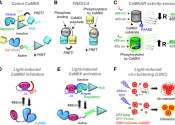
International research team achieves first-reported, complete vascularization of organoids on microfluidic chip
The Interdisciplinary Research Institute of Grenoble (CEA-Irig), CEA-Leti, and fellow European and Canadian institutes and researchers have demonstrated the complete vascularization of organoids on a microfluidic chip at ...
Mar 21, 2024

Researchers create real-time view of placental development in mice
Physicians and biomedical engineers at Duke University have developed a method to visualize the growth of a placenta throughout a mouse's pregnancy. By coupling an implantable window with ultrafast imaging tools, the approach ...

New vaccine against fatal tropical disease and potential bioterror weapon demonstrates efficacy in animal studies
In a mouse study, UCLA researchers tested a vaccine against the bacterium that causes melioidosis and found it was highly protective against the disease, which is endemic in many tropical areas, causing approximately 165,000 ...

Experiencing flow: A natural shield against mental and cardiovascular disease?
Can the proneness to experience flow protect against certain health problems? This question was investigated by an international team of researchers from the Max Planck Institute for Empirical Aesthetics (MPIEA) in Frankfurt ...

Better cancer trials could be around the corner
Cold Spring Harbor Laboratory Associate Professor and Cancer Center member Tobias Janowitz led a COVID-19 clinical trial with Northwell Health in 2021. When he and Clinical Fellow Hassal Lee reviewed the data, a surprising ...

Research team reports on safe use of HIV and hepatitis C co-infected donor kidneys for transplant
For VCU Health Hume-Lee Transplant Center organ transplant specialists, the work is not only about performing lifesaving surgeries.

Study uses metabolomics to identify novel diagnostic markers for chronic obstructive pulmonary disease
Chronic obstructive pulmonary disease (COPD) is a chronic lung disease with irreversible airflow limitation and a leading cause of death worldwide. COPD is characterized by chronic bronchitis and emphysema and is associated ...
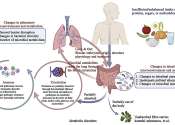
Dose-effect relationship between electroacupuncture and the regulation of endogenous opioid peptide system
Endogenous opioid peptides are the neurochemical basis of the anesthetic and analgesic effects of acupuncture. The quantity of acupuncture stimulus can be controlled accurately by using electroacupuncture.
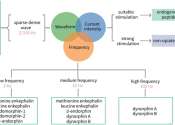
Skeleton-wide study of blood cell formation offers new ways to treat blood cancers, infections
Imagine being able to count the different types of blood cells being formed inside the tiny bones of a mouse and pinpointing the strings and clusters of cells within the bone marrow that are responsible for producing specific ...
Mar 20, 2024
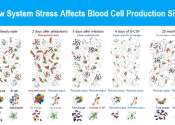
Dermatology researchers create new tool to measure hyperpigmentation
There are currently no globally accepted methods for analyzing hyperpigmentation, a condition in which patches of skin are darker than the surrounding skin on the body. While one popular scale exists, it is specific to facial ...

A computational model to simulate the biomechanical growth of breast tumors
Scientists from Universidad Carlos III de Madrid (UC3M) and Johns Hopkins University (JHU), in the U.S., have analyzed the growth of breast tumors from a biomechanical perspective and have created a computational model that ...

FoxO6-mediated ApoC3 upregulation promotes hepatic steatosis and hyperlipidemia in HFD aged rats: Study
A new research paper titled "FoxO6-mediated ApoC3 upregulation promotes hepatic steatosis and hyperlipidemia in aged rats fed a high-fat diet" has been published in Aging.
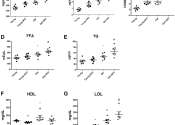
Understanding the wiring of the human genome
Around 98.5% of human DNA is non-coding, meaning it doesn't get copied to make proteins. A new study has connected many of these non-coding regions to the genes they affect and laid out guidelines for how researchers can ...
Mar 19, 2024

In nerve cells, insulin regulates whether mitochondria are shut down or kept running
The hormone insulin controls many cellular processes and adapts them to the body's current energy supply. One of the insulin-regulated processes is the quality control of mitochondria in neurons, Angelika Harbauer and her ...

HIV in cell culture can be completely eliminated using CRISPR-Cas gene editing technology, increasing hopes of cure
New research presented early ahead of this year's European Congress of Clinical Microbiology and Infectious Diseases (ECCMID 2024, Barcelona, 27-30 April) from a team of researchers in the Netherlands shows how the latest ...

FGF-2 found to promote periodontal healing in an osteoporosis model rat
A study investigating the effects of local application of fibroblast growth factor (FGF-2) on periodontal healing in osteoporosis model rats was presented at the 102nd General Session of the IADR, which was held in conjunction ...

E-mail newsletter
An official website of the United States government
The .gov means it’s official. Federal government websites often end in .gov or .mil. Before sharing sensitive information, make sure you’re on a federal government site.
The site is secure. The https:// ensures that you are connecting to the official website and that any information you provide is encrypted and transmitted securely.
- Publications
- Account settings
Preview improvements coming to the PMC website in October 2024. Learn More or Try it out now .
- Advanced Search
- Journal List
- Healthcare (Basel)

Current Issues on Research Conducted to Improve Women’s Health
Charalampos siristatidis.
1 Assisted Reproduction Unit, Second Department of Obstetrics and Gynecology, Medical School, National and Kapodistrian University of Athens, Aretaieion Hospital, 76 Vass Sofias, 11528 Athens, Greece
Vasilios Karageorgiou
2 2nd Department of Psychiatry, Medical School, National and Kapodistrian University of Athens, Attikon Hospital, 1 Rimini Street, 12642 Athens, Greece; moc.liamtoh@groegaraksav
Paraskevi Vogiatzi
3 Andromed Health & Reproduction Diagnostic Lab, 3 Mesogion Str, 15126 Maroussi, Greece; moc.liamg@iztaigovive
Associated Data
Not applicable.
There are varied lessons to be learned regarding the current methodological approaches to women’s health research. In the present scheme of growing medical literature and inflation of novel results claiming significance, the sheer amount of information can render evidence-based practice confusing. The factors that classically determined the impact of discoveries appear to be losing ground: citation count and publication rates, hierarchy in author lists according to contribution, and a journal’s impact factor. Through a comprehensive literature search on the currently available data from theses, opinion, and original articles and reviews on this topic, we seek to present to clinicians a narrative synthesis of three crucial axes underlying the totality of the research production chain: (a) critical advances in research methodology, (b) the interplay of academy and industry in a trial conduct, and (c) review- and publication-associated developments. We also provide specific recommendations on the study design and conduct, reviewing the processes and dissemination of data and the conclusions and implementation of findings. Overall, clinicians and the public should be aware of the discourse behind the marketing of alleged breakthrough research. Still, multiple initiatives, such as patient review and strict, supervised literature synthesis, have become more widely accepted. The “bottom-up” approach of a wide dissemination of information to clinicians, together with practical incentives for stakeholders with competing interests to collaborate, promise to improve women’s healthcare.
1. Introduction
Women’s health has been at the center of interest and growing concern in the last few decades. As a measurable outcome, it has been studied at the level of mortality [ 1 ], serious morbidity [ 2 ], and nutritional status [ 3 ] and through proven, evidence-based interventions. The implementation of such interventions is essential to guide national and international policies and programs, targeting the achievement of universal coverage of health services. In this respect, conducting the best quality of research (research that provides firm and ethical evidence adhering to the principles of professionalism, transparency, and auditability) with the use of robust methods is mandatory. Towards this goal, the current reality is far from encouraging.
In accordance with scientific literature guidelines and research quality guidelines (e.g., the Preferred Reporting Items for Systematic Reviews and Meta-Analyses (PRISMA)), impact factors, and citation count are considered the norms in current research evaluation modalities. However, recent works in research methodology challenge this simplifying notion [ 4 , 5 , 6 ].
The pitfalls reported are associated with various—albeit specific—“cultural, ethical, operational, regulatory, and infrastructural factors” linked with a lack of adequately trained researchers and subject attrition bias [ 7 ]. As a result, the clinical research environment is more or less inseminated with various types of bias, leading to the discouragement of sponsors. The growing plethora of questionable quality trials and reviews is another issue to consider. “From 14 reports of trials published per day in 1980 [to] 75 trials and 11 systematic reviews of trials per day, a plateau in growth has not yet been reached”, stated a policy forum article reported in 2010 [ 8 ]; additionally, the authors noted that “the staple of medical literature synthesis remains the non-systematic narrative review”, further pointing out the need for freely available simple yet valid answers to most patients’ questions [ 8 ]. In the same context, current data concerning women’s health derived from protocols, full study reports, and participant-level datasets are rarely available to a wide audience. At the same time, selective reporting of methods and results plagues reports. With the reduced quality of information produced, a lot of money has been wasted; subsequently, the existence of all kinds of bias affect the research itself and jeopardize the validity of the findings and, consequently, the care of women [ 9 ].
Issues have been raised by exploring different approaches to evaluate the quality of scientific input to the community. The ultimate goal remains a robust and uniform literature evaluation system adapted to the evolving conduct of studies and to the application of modern tools to re-ensure robust methodology and reporting of data and results. Here, we perform a narrative overview on current issues in study quality assessment regarding clinical medicine. We electronically searched PubMed using the following keywords: “clinical trials”, “meta-analysis”, “IPD”, “sponsor”, “challenges”, “regulatory”, “women’s health”, “evidence-based medicine/trends”, “policy making”, “publishing”, “research methods and practices”, “consumers network”, “bias”, “industry-sponsored trials”, “biomedical bibliographic databases”, and “quality research”, trying to collect data irrespective of type of report and language. Based on this evidence, we propose a combination of interventions at various levels, underlining quality aspects that we consider significant, and other routes of judgments.
2. The “Standard” Factors
Citation count and publication rates in international databases, hierarchy in author lists according to contribution, and the impact factor of the journal are considered important factors in the quality of a study, especially for the “scientific reader” seeking quality information on a specific topic. This has been extensively studied by other workgroups [ 10 , 11 , 12 , 13 ] and represents a justified trend accounting for the prestige of a scientific journal and the publication itself, along with language and availability, and ultimately skewing scientific trends or potentially leaving some important contributions in obscurity. Even though previous works contemplate the importance of the aforementioned factors in the true quality of research studies and publications, all considerations are derived from a common denominator, that is, that the currently used quality standards either for the common user or for greater structures and institutions most probably do not reflect quality but rather popularity. In this context, the citation rate (including self-citation and “negative citing”) and an impact statement on the individual author (a concise summary of the impact of somebody’s career) have been proposed. In addition, other metrics, including altmetrics, bibliometrics, and H-index, combined with updated mathematical models, such as artificial neural networks, might be the tools of the future; these models constitute more accurate tools due to the special characteristics of these “learning through training” processes, resembling the capacity of the brain to learn and judge [ 14 ].
3. The Type of Research Question and Studies
Although multiple outcomes may be reported at once and variability in study designs fluctuates, a primary role belongs to the type of research question explored by a study or publication, which will inevitably determine the methodology to be followed. For example, in past years, there is a disproportionate output of Systematic Reviews (SRs) and meta-analyses from Asian countries produced on a massive scale [ 15 , 16 ] as a means of “publishing in order to publish” with questionable quality and methods. Their numbers are so high that, in some cases, it overtakes original trials. Of note, the use of such studies in the biomedical field was occasional until the 1990s [ 17 ]. Moreover, those from the Cochrane collaboration, the fundamental organization for good quality systematic reviews, are only a small fraction of this output [ 8 ].
With regard to Randomized Controlled Trials (RCTs), suggestions have been made in recent reports on better conduct [ 18 ]: trial protocols should be simple, reproducible, and well organized, with predefined and well-described study populations/participants and should have sound interventions, and representative comparisons and outcomes. Of note, these could be based on the conclusions of previously conducted SRs that often point out issues in quality and methodology of the original trials. Minimal deviations from protocols and a priori specification of useful core outcomes that translate directly to women’s wellbeing are the focus of the CROWN Initiative [ 19 ]. According to the authors, there has been a multi-targeted set of suggestions to “ensure that critical and important outcomes with good measurement properties are incorporated and reported, in advancing the usefulness of research, in informing readers, including guideline and policy developers, who are involved in decision-making, and in improving evidence-based practice”.
A priori description of the outcomes of interest can alleviate the known issues/biases associated with exploratory analyses. A change in outcome, especially in cases where the results do not support the rationale of the study, can mask the original intentions of the authors and can recontextualize the same results in a more positive manner [ 20 ]. Still, an exploratory analysis has a significant role in deducing potentially valuable conjectures for future studies. However, it is central for transparency that the authors explicitly state when this is the case, i.e., when an analysis is conducted post hoc. In order to ease the distinction of post hoc and a priori analyses by SR authors and readers, Dwan et al. (2014) proposed the publication of both protocols and pre-specified analyses [ 21 ].
We cannot anticipate that SRs can retrospectively solve the potential gaps and inconsistencies in the methodology and outcome reporting. For robust answers, research questions must be well defined from the start. However, more elaborate techniques of evidence synthesis can guide future research in more meaningful ways and are becoming more popular. Specifically, prospective and individual patient data meta-analyses (IPDMA) may need to become the norm in literature synthesis [ 22 , 23 ]. A major difficulty in IPDMA is the fact that securing sensitive patient data is a time-consuming task that demands the establishment of mutual trust. Even when representative evidence has been secured, data availability may still affect the pooled evidence. A recent study assessing IPDMA’s treating oncological topics suggested that studies for which they were available differed significantly from studies in which the authors did not share them [ 24 ]. Still, IPDMA is a trustworthy methodology that can assess the effect of patient-level covariates on treatment outcomes or diagnostic accuracy more thoroughly than the standard procedure of a meta-regression used in aggregate-data meta-analyses [ 25 ]. Given the current ethos of openness in clinical trials and common repositories becoming more widespread, IPDMA is likely to become the mainstay of critical synthesis of literature [ 26 ].
Finally, we have to include observational research in an effort to improve women’s health in the context of greater personalization of care and stratified medicine. Such studies have traditionally served as tools for understanding the nature of particular clinical conditions, for determining risk factors and mechanisms of actions, and for identifying potential intervention targets. Their disadvantages associated with methodological issues such as confounds and the fact that they are prone to limited internal validity could be restricted through guidelines such as the strengthening the reporting of observational studies in epidemiology (STROBE) statement [ 27 ].
4. The Inclusion of Young Authors
The encouragement of younger and/or less experienced scientists and ultimately their inclusion in the respective workgroups and in the list of contributors may provide an unexpected topic or question and a clearer view on established research schemes. The productivity of highly cited papers is related to the advanced age of their authors; adversely, better funding opportunities for younger researchers would give them unique chances to build strong productivity [ 28 ]. The advancement of knowledge taught during academic training as well as a higher probability of compliance with robust methods of reporting should encourage the inclusion of younger scientists. Tips and recommendations of young authors and early career scientists have been plenty, including collaborating with researchers within as well as outside their field and/or country, sending their research article to an appropriate journal, and adequately highlighting the novelty and impact of their research [ 29 , 30 ].
Towards this goal, the improvement of the scientific literacy of young scholars is the main step, and this burden falls on to the shoulders of the trainers. There are “uncomfortable truths” in training [ 31 ], but scientific research and the mode of thinking are processes continuously accumulated and must be taught by each director or responsible authority: they should improve the skills and capabilities of young scholars in scientific and technological literacy and in communication and productivity.
5. Quality in Reporting
Reporting quality must be ensured by avoiding bias, such as selective reporting, deliberate or not. Avoiding reporting insignificant data and outcomes could lead to severe distortion in the SR [ 32 ]. Thus, flaws in design, conduct, analysis, or reporting of RCTs can produce bias in the estimates of a treatment effect.
For example, in a large meta-epidemiological study of 1973 RCTs, a lack of blinding was associated with an average 22% exaggeration of treatment effects among trials that reported subjectively assessed outcomes [ 33 ]. This deviation is enough to adversely affect the interpretation of the results and further negatively influences regulatory settings and clinical practice.
Another example involves the evidence base on recent cancer drug approvals. Between 2014 and 2016, a quarter of the relevant studies were not RCTs; of the RCTs, the majority of them did not measure overall survival or quality of life outcomes as primary endpoints, and half of them were judged to be at high risk of bias; the authors’ judgments changed for a fifth of them when they relied on information reported in regulatory documents and scientific publications separately [ 34 ].
6. Strict Implementation of Rules in the Peer Review Processes
These processes first appeared in 1655 in a collection of scientific essays by Denis de Sallo in the Journal des Scavans , and almost 100 years later (1731), their implementation became a standard of practice by almost all biomedical journals [ 35 ]. Maintaining the quality and scientific integrity of publications; evaluating for competence, significance, and originality; and ensuring internal and external validity of submissions are crucial points. Similarly, the appropriate selection and training of reviewers to provide quality and specialized reviews without bias is an essential part of the process [ 36 ].
7. Sponsorship
Ethical and other issues surrounding sponsorships, to ensure credibility of a study, have been addressed in the past. One of the main sources of funding remains the industry [ 37 ]. Indeed, sponsored clinical research has always been questioned, influenced by reports of selective or biased disclosure of research results, ghostwriting and guest authorship, and inaccurate or incomplete reporting of potential conflicts of interest [ 38 ]. Although these may be a scarce incidence nowadays, active monitoring in funded studies should be implemented throughout in order to eliminate this possibility or any other conflicts of interest. An alarming analysis of 319 trials indicated that only a small minority (three out of 182 funded trials) were funded by multiple sponsors with competing interests. The presence of industry funding also almost tripled (OR = 2.8, 95% CI: 1.6, 4.7) the possibility of a study having reported favorable findings [ 39 ]. Furthermore, registered study protocols that announced funding were less likely to be published after their completion (non-publication rate: 32% vs. 18% [ 40 ].
8. Change in the Notion of Publishing
The change in notion and perception of the impact of outcomes is perhaps the most important part of the improvement in research conduct and implementation. This can be achieved through differentiation and modern adaptation of our scientific culture fighting inner and external incentives. Every scientific input should target a wider human benefit. A change in notion and incentives in publishing is crucial, from the level of the investigator aiming to publish/individual behaviors up to the social forces that provide affordances and incentives for those behaviors [ 41 , 42 , 43 ].
In a specific area of research, a clinical evaluation should precede publication in order to ensure relevance. A dramatic example is the scientific literature demonstrating an overload of various biomarkers for various diseases in which only a few of them have been confirmed by subsequent research and few have entered routine clinical practice [ 44 ]. In addition, biomarkers should also be judged on the grounds of cost-effectiveness and incremental net benefit [ 45 ]. Multiple indices may have comparable diagnostic accuracy, but their cost, an unavoidable concern in public health, may differ significantly.
Therefore, the selection of information to be published should be conducted on safer grounds and should be adequately supported by the authors, based on our knowledge on the scheme to date, and importantly, a summary of previous attempts should note the effective interventions and provide a concluding remark for the scientist through a good quality review.
9. Patient’s Contribution to Evaluation and Sex/Gender Analyses
In the era of evidence-based medicine, feedback from the recipients of healthcare development is gaining more importance and platforms for opinion exchange between patients and investigators have been established. This has already been implemented by the Cochrane Collaboration, where patient review is an integral part of the SR publication process and plain language summaries target a nontechnical audience. This process could be adopted as standard practice if accordingly modified. If the patient review, for example, is to be widely implemented in other journals, it would constitute a potentially radical paradigm shift that aims to solidify the review process. Of course, technical difficulties, such as acknowledgement and incentives for patients participating in review processes, are fields where further developments will enhance this policy [ 46 ].
It has been noted that the women population represents an “unequal majority” in health and health care. It is also well established that women’s health needs are dissimilar from those of men, resulting from the fact that both the woman’s body and brain functions differ critically from a man’s and that she reacts differently to even the same stimuli, such as medications or environmental events. It is indicative that, even though a large proportion of study protocols included women, only 3% of them planned an analytical approach for quantifying sex differences [ 47 ]; similarly, a recent report on therapies for atrial fibrillation concluded that the sex-specific reporting in trials comparing them was extremely low [ 48 ]. As a result, women have not received an ideal “personalized” health care, in many cases, so far. Thus, a specific design for studies on women’s health should be required.
There are several examples in the history of women’s health research where the contribution of the consumer women’s health movement in promoting research in women’s interests was critical. One of them concerned the collaborations between consumer groups and researchers in obtaining funding in the U.S. and France for a follow-up on a cohort of diethylstilboestrol-exposed people when the drug was discovered to be a transplacental carcinogen in pregnancy in 1971.
Another important issue is the nonavailability of sex/gender data from primary studies and consequently from SRs, which are the main tools to provide the necessary evidence for the formation of relevant policies [ 49 ]: the authors stated that even “Cochrane and the Campbell Collaboration have no specific policy on the reporting of sex/gender in systematic reviews, although Cochrane has endorsed the SAGER guidelines developed by the European Association of Science Editors” [ 50 ]. In their review, they found that the Methods sections of these collaborations included the most reports on sex/gender in both Campbell (50.8%) and Cochrane (83.1%) reviews, but the majority of these were descriptive considerations of sex/gender. They also reported that 62% of Campbell and 86% of Cochrane reviews did not report sex/gender in the abstract but included sex/gender considerations in a later section. A previous study on the subject reported that almost half of SRs described the sex/gender of the included populations but only 4% assessed sex/gender differences or included sex/gender when making judgments on the implications of the evidence [ 51 ].
10. An Improvement in the Dissemination of Studies
Despite advances in the dissemination of study information, half of health-related studies remain unpublished [ 52 ]. Problems in the publishing scheme in the selection of studies that appear to have a higher impact or that come from a respectable institution can lead to biased publishing. At the extreme, unsafe, ineffective, or even harmful interventions may enter clinical practice, as was the case with hormone replacement therapy [ 53 ]. In some instances, even a shift in healthcare resource allocation is reported [ 9 ]. It is standard practice in critical readings of literature to evaluate publication bias. This method attempts to address, with controversial success, precisely the unfortunate keenness of editors to promote positive results that imply novelty. A classic example of this inflation of positive and supposedly important results is the 2012 study by Fanelli [ 54 ], in which studies classified as related to clinical medicine showed a gradual increase in reporting positive findings. The author criticized the efficacy of measures taken to attenuate publication bias, e.g., protocol registration.
On the other hand, a respectable amount of research is published in other languages and not indexed in U.S. National Library of Medicine [ 55 ], while their quality remains controversial [ 56 ]; the authors of the above studies stated that peer review processes need to be improved through guidelines aiming to identify the authenticity of the studies.
The bulk of peer reviews remain a voluntary occupation, with the main motivation being recognition by peers. In addition, statistical review, a time-consuming process, is not performed in all published research. This process can be accelerated by practices that promote data and code sharing. It is also suggested that, even when papers are retracted, this could have been avoided with the simple measure of an active data sharing policy [ 57 ].
11. Role of the Stakeholders and Foundations
For the stakeholders and collaborative systems, a more energetic role is required in ensuring the conduct of multicenter massive-trials with increased clinical relevance. The main problem in the conduct of research is the lowered clinical value of the results from small sample sizes, even in RCTs. Mathematical models have been developed to predict sample sizes corresponding to the clinical value of the outcomes, while patient data from databases could easily increase the sample size of trials at much lower costs. Such paradigms could include the Health Care Systems Research Collaboratory and the Patient-Centered Outcomes Research Network (PCORnet) [ 58 ]. Also, new levels of patient engagement can raise the possibility of improving clinical outcomes on health. Involving multiple stakeholders (with potentially conflicting interests) in shared conversations on research has been proposed [ 59 ].
New foundations should be placed in research by focusing on the improvement of quality, such as NIH and PCORI [ 60 ]. The Cochrane Collaboration represents one of the very few large-scale initiatives in this context; importantly, both conduct high quality reviews, and participant education at all levels are based mostly from volunteers who care about science and high-quality evidence.
12. Cooperation of All Forces: The Role of Industry/Funding
The central point of problem is funding. USA-affiliated industry-funded trials and related activities represent more than 5% of US healthcare expenditure, with approximately $70 billion in commercial and $40 billion in governmental and non-profit funding annually. The NIH invests $41.7 billion annually in medical research: 80 percent is awarded for extramural research, through 50,000 competitive grants to more than 300,000 researchers at more than 2500 universities, medical schools, and other research institutions [ 61 ]. Concerns have been raised that this approach appears inefficient for how biomedical research is chosen, designed, regulated, financed, managed, disseminated, and reported [ 62 , 63 , 64 ].
The scheme, however, has been shifting in favor of Asian countries. Factors, such as ease of recruitment, population, and various epidemiological factors (e.g., increased incidence of infectious disease) have contributed positively to an inflation of local clinical trials [ 7 ]. Severe accusations regarding clinical data management have been raised, although the magnitude of the problem cannot be safely evaluated [ 65 ]. This unavoidably hinders the validity and future usefulness of these results despite initial enthusiasm from editors and the industry.
Economic forces are important, and ultimately, the industry seeks to maximize profit by providing new products and services to the medical market [ 66 ]. In industry-funded clinical research, intentional and unintentional commercial motives can control the study design and comparators. Governmental involvement [ 66 ] has an important role in distributing research funds in areas important for the protection and restoration of human health, even when the prospects for commercial profit are poor or nonexistent. The recruitment of specialized and qualified professionals should set higher standards of rigor when they are involved in commercial or unavoidably conflicted relationships and to disseminate the resources evenly, especially when nowadays these are scarce.
Funders and academic institutions are responsible for the moral status, as research usually initiates from there and determines any kind of shift in the process. Academics might be judged on the methodological rigor and full dissemination of their research, the quality of their reports, and the reproducibility of their findings. Previous reports suggest ways to increase the relevance and to optimize resource allocation in biomedical research, indicating how resource allocation should be conducted, along with revisions in the appropriateness of research design, methods, and analysis, with efficient research regulation and management fully accessible information, promoting unbiased and usable reports. Additionally, motivation must be given to authors to share their data [ 67 ], as has been performed in the field of genetics [ 68 ]. Of note, synthesis of evidence on the meta-epidemiological level cannot always confidently provide answers to practical clinical questions [ 69 ].
Compromised ethics should be traced and removed from independent research and academia, while journals should on no occasion put profit and publicity above quality. The solution to this lies on the progressive refinement of methods and improvement of the objective and controlled processes.
13. Training
Essential training and interprofessional learning of clinicians and other hands-on scientists in the medical field are an absolute must. There is a growing need to improve their scientific insight and judgment. Reviewers should learn how to apply an unbiased critical thinking and evaluation of the methods explored, of the study questions, and of the resulting impact towards good clinical practice and human welfare. This not only applies to organizational refinement by the Academic Institutes and Publishing Organizations but also to the scientists themselves to obtain the drive to train, along with methodologists and statisticians, so that specialization and knowledge is shared and every contributor works soundly towards a common cause.
14. Conclusions
Research is a solid foundation for the progression of sciences, and the key importance in maintaining the evolution of knowledge is “contributing and sharing”, but this has to be performed adequately. Although there are several criteria and controlled circumstances under which new data and overviews of data are published, research and publishing methods require continuous readjustments and modifications to ensure quality. An overview of the published literature on women’s health and its relevant subtopics is an excellent paradigm on a crucial field of the different types of research and publications that one may encounter but also an example of the vast variability in information available, not only in terms of results but also in terms of design, analysis, quality of information, and implementation of results. In clinical practice, it is imperative to assess information collectively a researcher, medical expert, funder, reviewer, and patient, and this should encourage the improvement of evidence-based patient management.
This review aimed to present the major nodal points of quality and to propose a combination of interventions at various levels, along with other routes of judgement. We also sought to address potential flaws and pitfalls in research conduct and to provide recommendations upon improvement of study designs/methods and scientific reporting to promote publication quality and stricter criteria for release with support from the appropriate structures. A summary of recommendations towards evidence implementation as presented in Table 1 could comprise valuable guidance to both the health experts and the health service recipients to which these standards are quality criteria. A meticulous study design that promotes the transparency of methods and potential conflicts allows a clear distinction of the pathologies and targeted groups and that provides substantial scientific background should be pursued by both researchers and readers. Robust implementation of the pre-stated methods and approaches of analysis, with active participation of collective fronts tied to the subject, should allow quality output to be published and should add value to the findings. Patient-first and common welfare should be considered throughout in conjunction with supporting and providing evidence on robust outcomes for the improvement of healthcare, that may be facilitated by healthy and network collaborations.
Summary of the recommendations for the steps towards evidence implementation.
How these recommendations should be accounted for, evaluated, and implemented relies on the individual discretion of the reader, the scientist, the author, or any entity affiliated with a publishing organization and should be customized to be applied individually for each specialized academic and scientific field but also tailored across continents and countries. The latter is derived from the realization that research conduct, funding, and even the monitoring authorities of clinical studies rely on nonuniform procedures among countries and unions and conforms to different legal frameworks across countries. Nevertheless, a core of actions, precautions, and a quality exemplar of golden standards should be constructed and widely applied to meet the standards that describe a representative scientific contribution, for example, uniform, widely accepted, and practiced standards through policies, guidelines, and rules on a national and/or international level created either by in-country legislation or by scientific entities; allocation of the resources for their implementation; and mechanisms of control for their application and adherence by all.
In conclusion, multiple steps throughout the long and costly process of trial conduct are prone to bias. Notably, increasing international competition favors faster and cheaper patient recruitment, conduct, and analysis and, in turn, produces questionable research. Literature synthesis through SRs and/or meta-analysis has a primarily retrospective role that guides future research and sheds light on arguable topics but cannot erase the wrongdoings of primary studies, which are often concealed. The “bottom-up” approach of a wide dissemination of information to clinicians, together with practical incentives for stakeholders with competing interests to collaborate, promise to improve women’s healthcare.
Author Contributions
C.S. conceived and designed the study and prepared the manuscript. P.V. and V.K. contributed to the design and reporting of the research. All authors approved the final version of the manuscript.
This research received no external funding. The APC was funded by the first author.
Informed Consent Statement
Not applicable due to the nature of this study.
Data Availability Statement
Conflicts of interest.
The authors have no conflicts of interest.
Publisher’s Note: MDPI stays neutral with regard to jurisdictional claims in published maps and institutional affiliations.
- Introduction
- Conclusions
- Article Information
A, Total number of ED visits. B, Number of MH-related ED visits. C, Proportion of ED visits for MH conditions.
eAppendix 1. Supporting Information on US Department of Health and Human Services (HHS) Regions
eTable 1. Keyword Syndrome Descriptions With Free-Text Reason for Visit (Chief Concern) Search Terms and Diagnosis Codes Included in Keyword Syndromes for Emergency Department Visits Associated With Mental Health Conditions (MHCs)—National Syndromic Surveillance Program
eTable 2. Change in Log of Mental Health (MH) Emergency Department (ED) Visits and Log of Total ED Visits in 2020 and 2021 Relative to the Corresponding Baseline Levels in 2019
eAppendix 2. Alternative Specification for eTable 2
Data Sharing Statement
- Measuring Mental Health Crises During the COVID-19 Pandemic JAMA Network Open Invited Commentary July 11, 2023 Tyler R. Black, BSc, MD
See More About
Sign up for emails based on your interests, select your interests.
Customize your JAMA Network experience by selecting one or more topics from the list below.
- Academic Medicine
- Acid Base, Electrolytes, Fluids
- Allergy and Clinical Immunology
- American Indian or Alaska Natives
- Anesthesiology
- Anticoagulation
- Art and Images in Psychiatry
- Artificial Intelligence
- Assisted Reproduction
- Bleeding and Transfusion
- Caring for the Critically Ill Patient
- Challenges in Clinical Electrocardiography
- Climate and Health
- Climate Change
- Clinical Challenge
- Clinical Decision Support
- Clinical Implications of Basic Neuroscience
- Clinical Pharmacy and Pharmacology
- Complementary and Alternative Medicine
- Consensus Statements
- Coronavirus (COVID-19)
- Critical Care Medicine
- Cultural Competency
- Dental Medicine
- Dermatology
- Diabetes and Endocrinology
- Diagnostic Test Interpretation
- Drug Development
- Electronic Health Records
- Emergency Medicine
- End of Life, Hospice, Palliative Care
- Environmental Health
- Equity, Diversity, and Inclusion
- Facial Plastic Surgery
- Gastroenterology and Hepatology
- Genetics and Genomics
- Genomics and Precision Health
- Global Health
- Guide to Statistics and Methods
- Hair Disorders
- Health Care Delivery Models
- Health Care Economics, Insurance, Payment
- Health Care Quality
- Health Care Reform
- Health Care Safety
- Health Care Workforce
- Health Disparities
- Health Inequities
- Health Policy
- Health Systems Science
- History of Medicine
- Hypertension
- Images in Neurology
- Implementation Science
- Infectious Diseases
- Innovations in Health Care Delivery
- JAMA Infographic
- Law and Medicine
- Leading Change
- Less is More
- LGBTQIA Medicine
- Lifestyle Behaviors
- Medical Coding
- Medical Devices and Equipment
- Medical Education
- Medical Education and Training
- Medical Journals and Publishing
- Mobile Health and Telemedicine
- Narrative Medicine
- Neuroscience and Psychiatry
- Notable Notes
- Nutrition, Obesity, Exercise
- Obstetrics and Gynecology
- Occupational Health
- Ophthalmology
- Orthopedics
- Otolaryngology
- Pain Medicine
- Palliative Care
- Pathology and Laboratory Medicine
- Patient Care
- Patient Information
- Performance Improvement
- Performance Measures
- Perioperative Care and Consultation
- Pharmacoeconomics
- Pharmacoepidemiology
- Pharmacogenetics
- Pharmacy and Clinical Pharmacology
- Physical Medicine and Rehabilitation
- Physical Therapy
- Physician Leadership
- Population Health
- Primary Care
- Professional Well-being
- Professionalism
- Psychiatry and Behavioral Health
- Public Health
- Pulmonary Medicine
- Regulatory Agencies
- Reproductive Health
- Research, Methods, Statistics
- Resuscitation
- Rheumatology
- Risk Management
- Scientific Discovery and the Future of Medicine
- Shared Decision Making and Communication
- Sleep Medicine
- Sports Medicine
- Stem Cell Transplantation
- Substance Use and Addiction Medicine
- Surgical Innovation
- Surgical Pearls
- Teachable Moment
- Technology and Finance
- The Art of JAMA
- The Arts and Medicine
- The Rational Clinical Examination
- Tobacco and e-Cigarettes
- Translational Medicine
- Trauma and Injury
- Treatment Adherence
- Ultrasonography
- Users' Guide to the Medical Literature
- Vaccination
- Venous Thromboembolism
- Veterans Health
- Women's Health
- Workflow and Process
- Wound Care, Infection, Healing
Get the latest research based on your areas of interest.
Others also liked.
- Download PDF
- X Facebook More LinkedIn
Villas-Boas S , Kaplan S , White JS , Hsia RY. Patterns of US Mental Health–Related Emergency Department Visits During the COVID-19 Pandemic. JAMA Netw Open. 2023;6(7):e2322720. doi:10.1001/jamanetworkopen.2023.22720
Manage citations:
© 2024
- Permissions
Patterns of US Mental Health–Related Emergency Department Visits During the COVID-19 Pandemic
- 1 Department of Agricultural and Resource Economics, University of California, Berkeley
- 2 Department of Economics, Naval Academy, Annapolis, Maryland
- 3 Department of Epidemiology and Biostatistics, Philip R. Lee Institute for Health Policy Studies, University of California, San Francisco
- 4 Department of Emergency Medicine, Philip R. Lee Institute for Health Policy Studies, University of California, San Francisco
- Invited Commentary Measuring Mental Health Crises During the COVID-19 Pandemic Tyler R. Black, BSc, MD JAMA Network Open
Question Did patterns of US emergency department (ED) visits and mental health (MH)–related ED visits change during the COVID-19 pandemic?
Findings In this cross-sectional study with 1570 total observations for January 1, 2019, to December 31, 2021, mean total ED visits decreased more than the proportion of ED visits for MH conditions during the weeks after the pandemic was declared in 2020 compared with the corresponding weeks in 2019. The mean proportion of MH-related ED visits increased from 8% in 2019 to 9% in 2020 and then decreased to 7% in 2021, when mean total ED visits rebounded more than MH-related visits.
Meaning The finding that ED visits for MH decreased less than visits for other reasons during the pandemic suggests that patients with non-MH conditions may have greater flexibility during public health emergencies, whereas there may be fewer alternatives for MH care.
Importance Numerous studies have shown that the prevalence of mental health (MH) conditions worsened during the COVID-19 pandemic. Further research is needed on this phenomenon over a longer time horizon that considers the increasing trend in MH conditions before the pandemic, after the pandemic onset, and after vaccine availability in 2021.
Objective To track how patients sought help in emergency departments (EDs) for non-MH and MH conditions during the pandemic.
Design, Setting, and Participants This cross-sectional study used administrative data on weekly ED visits and a subset of visits for MH from the National Syndromic Surveillance Program from January 1, 2019, to December 31, 2021. Data were reported from the 10 US Department of Health and Human Services (HHS) regions (Boston, New York, Philadelphia, Atlanta, Chicago, Dallas, Kansas City, Denver, San Francisco, and Seattle) for five 11-week periods. Data analysis was performed in April 2023.
Main Outcomes and Measures Weekly trends in total ED visits, mean MH-related ED visits, and proportion of ED visits for MH conditions were investigated to determine changes in each measure after the pandemic onset. Prepandemic baseline levels were established from 2019 data, and time trends of these patterns were examined in the corresponding weeks of 2020 and 2021. A fixed-effects estimation approach with weekly ED region data by year was used.
Results There were 1570 total observations in this study (52 weeks in 2019, 53 weeks in 2020, and 52 weeks in 2021). Statistically significant changes in non-MH and MH-related ED visits were observed across the 10 HHS regions. The mean total number of ED visits decreased by 45 117 (95% CI, −67 499 to −22 735) visits per region per week (39% decrease; P = .003) in the weeks after the pandemic onset compared with corresponding weeks in 2019. The mean number of ED visits for MH conditions (−1938 [95% CI, −2889 to −987]; P = .003) decreased significantly less (23% decrease) than the mean number of total visits after the onset of the pandemic, increasing the mean (SD) proportion of MH-related ED visits from 8% (1%) in 2019 to 9% (2%) in 2020. In 2021, the mean (SD) proportion decreased to 7% (2%), and the mean number of total ED visits rebounded more than that of mean MH-related ED visits.
Conclusions and Relevance In this study, MH-related ED visits demonstrated less elasticity than non-MH visits during the pandemic. These findings highlight the importance of addressing the provision of adequate MH services, both in acute and outpatient settings.
Numerous studies report that adverse mental and behavioral health conditions, including depression, anxiety, substance use, and suicidal ideation, became more prevalent in the early months of the COVID-19 pandemic in 2020 and into 2021 compared with prior years. 1 - 4 Even before the pandemic onset, literature reported an increased demand for psychiatric care, as measured by emergency department (ED) visits for mental health (MH) conditions. 5 , 6 These changes in MH status were prevalent not only in the US but also in many other countries. According to a World Health Organization report, the global prevalence of anxiety and depression increased by 25% during the first year of the pandemic. 7 Other research also showed a 28% increase in major depressive disorder and a 25% increase in anxiety disorders in 2020. 8 One study reported that rates of major depressive disorder and acute stress or posttraumatic stress disorder within the first few weeks of the pandemic in the US were approximately 3 times higher and rates of generalized anxiety disorder were 10 to 16 times higher compared with prepandemic levels. 9 The prevalence of MH conditions continued to worsen into 2021, as evidenced by a US Centers for Disease Control and Prevention (CDC) report stating that the percentage of adults with recent symptoms of an anxiety or depressive disorder increased from 36.4% in August 2020 to 41.5% in February 2021. 10
Less is known regarding patterns in ED visits for MH conditions during the COVID-19 pandemic. A widely cited study on ED visit trends in the US during the pandemic reported that the total number of ED visits for any cause decreased by 42% from March 2019 to March 2020. 11 While the number of ED visits specifically for MH conditions also declined in March and April 2020, one repeated cross-sectional study of approximately 190 million ED visits reported that proportions of visits for MH conditions, suicide attempts, all drug and opioid overdoses, intimate partner violence, and child abuse and neglect were higher in mid-March through October 2020 compared with the same period in 2019. 12 Additional studies have reported general trends in MH during the pandemic, but they lack prepandemic comparison periods to infer whether more recent changes were driven by the pandemic or were an extension of secular trends. 8 , 11 Other studies include data up until 2020 but do not include 2021. 5 - 7 Our study aimed to extend these findings and use the most current longitudinal regional data at the weekly level to examine general trends in ED use related to COVID-19 and quantify how ED visits for MH changed from 2019 to 2021.
This cross-sectional study used the CDC National Syndromic Surveillance Program (NSSP) Mental Health ED visit data set, version 1, which included ED visit–level information by region and week for the 10 US Department of Health and Human Services (HHS) regions (Boston, New York, Philadelphia, Atlanta, Chicago, Dallas, Kansas City, Denver, San Francisco, and Seattle) for January 1, 2019, through December 31, 2021 (eAppendix 1 in Supplement 1 ). The data set is based on administrative data reported by local and state public health departments as part of the NSSP 13 and is a convenience sample with ED visit data from 71% of US facilities. The unit of observation is denoted at the week level by HHS region. The University of California, Berkeley Institutional Review Board deemed this study as not human participant research and waived informed consent. The study followed the Strengthening the Reporting of Observational Studies in Epidemiology ( STROBE ) reporting guideline.
Mental health–related ED visits were identified within the NSSP data set using the CDC Mental Health query, version 1, which included visits (outpatient and admitted) in which there were acute MH crises (ie, the sole or primary reason for the visit was only related to MH) and visits in which MH conditions were present (defined as coded in the discharge diagnosis or mentioned in the chief concern text) but may not have been the sole reason for the visit. The complete list of chief concerns and diagnosis codes used to classify visits by MH syndrome is presented in eTable 1 in Supplement 1 .
We used longitudinal weekly regional data for 2019, 2020, and 2021 to assess 3 outcomes: total weekly number of ED visits, number of weekly MH-related ED visits, and proportion of ED visits due to MH conditions. Data were aggregated to the week level for all age cohorts. We established baseline levels from 2019, and then examined time trends of these patterns during the corresponding weeks of 2020 and 2021. We used a fixed-effects estimation approach with weekly ED region data by year. Given that the pandemic was declared in week 12 of 2020, we defined the following five 11-week period indicators: WP1, weeks 0 to 11 (equal to 1 for the first 11 weeks for all years and 0 otherwise); WP2, weeks 12 to 23; WP3, weeks 24 to 35; WP4, weeks 36 to 47; and WP5, weeks 48 to 53 in 2020 and weeks 48 to 52 in 2021.
In separate regressions for each of the 3 outcomes, we denoted Y rwy the linear model for geographic region r (Region r ), year t (Year t ), and week of year w (Week w ) as follows:
Region r was a vector of region fixed effects for each region, Year t was a set of indicators for each year (2019 was the omitted year), and Week w was a vector of week-of-year fixed effects that controlled for week-of-year changes in outcomes common to all regions and measured relative to the baseline week of year (defined as the first week of 2019). These week-of-year fixed effects common to all regions were included in an attempt to capture outcomes associated with seasonality at the week level common to all regions. Finally, ε rwt was an idiosyncratic error term composed of unobserved determinants of each outcome that were not controlled for by the variables specified in the linear model in the Equation.
The coefficients of interest were associated with the interactions between each of the 11-week period indicators (WP1-WP5) and the 2020 and 2021 indicator variables. β 1 coefficients measured changes in outcomes during weeks 1 to 11 (ie, January until mid-March) in 2020 and separately in 2021, relative to the same weeks in 2019. β 2 coefficients measured changes in outcomes during the following 11 weeks in 2020 and separately in 2021, relative to the same weeks in 2019. Similarly, β 3, β 4 , and β 5 measured changes in outcomes in the corresponding weeks in 2020 and 2021 (separately) relative to the corresponding weeks in 2019.
We used the Equation to estimate values separately for the total number of ED visits, the number of MH-related ED visits, and the proportion of ED visits due to MH conditions by week. Our model allowed us to identify how these outcomes changed in 2020 and 2021 (separately) relative to the baseline corresponding weeks in 2019. We did this while explicitly controlling for other confounding factors specific to each week, region, and year. Finally, robust SEs were clustered by region to account for correlated outcomes over time within a region.
Analyses were conducted using Stata, version 14.2 (StataCorp), with 2-sided P < .05 considered statistically significant. Data analysis was performed in April 2023.
There were 1570 total observations of ED visits per week in the 10 HHS regions from January 2019 to December 2021 (52 weeks in 2019, 53 weeks in 2020, and 52 weeks in 2021). Table 1 presents summary statistics and annual breakdowns for 2019, 2020, and 2021 for the key outcomes of interest averaged across all 10 HHS regions. The unit of observation was a specific week in a specific region (week-region). The mean (SD) number of weekly ED visits per HHS region was 126 117 (96 462; range, 12 598-455 572). On average, the mean (SD) number of ED visits per week-region for MH conditions was 9374 (6751; range, 1068-29 169). The mean proportion of ED visits for MH conditions was 8% (range, 3%-12%).
In our comparison of the 3 study years, we observed that the mean number of total ED visits and MH-related ED visits decreased in 2020 relative to 2019. Since the mean number of total ED visits decreased more than the mean number of MH-related ED visits, the mean (SD) proportion of ED visits for MH conditions increased from 8% (1%) in 2019 to 9% (2%) in 2020. During the pandemic, this proportion reached a maximum of 12% in the Seattle region in April 2020, whereas the maximum was 11% in the Kansas City region in March 2019. In 2021, the mean (SD) proportion decreased to 7% (2%), primarily due to the mean number of total ED visits rebounding more than that of MH-related ED visits.
The Figure depicts weekly time trends over the 10 HHS regions for total ED visits, MH-related ED visits, and proportion of ED visits due to MH conditions by week. Total ED visits had a comparable stable trend for 2019 and 2020 during the weeks leading up to the second week of March ( Figure , A). The mean (SD) number of weekly ED visits for each region was 135 260 (101 009) in 2019, which decreased to 115 277 (90 512) in 2020 once the global pandemic was declared ( Table 1 ). The number of total ED visits in 2021 started lower than in 2020 and 2019 but eventually returned to 2019 levels during weeks 24 to 35, resulting in a mean (SD) of 128 022 (96 796) visits per week-region in 2021.
The absolute number of MH-related ED visits increased slightly until mid-March in 2019, while the number of MH-related visits over the same period in 2020 was higher than in 2019 and fairly stable ( Figure , B). Once the global pandemic was declared in 2020, the total number of MH-related ED visits decreased sharply compared with the same weeks in 2019. While the total number of MH-related ED visits increased later in summer 2020, it remained lower than that in 2019 for similar weeks. The mean (SD) number of weekly MH-related ED visits was 9886 (7076) in 2019, which decreased to 9337 (6917) in 2020 ( Table 1 ). The total number of MH-related ED visits in 2021 began at a lower level than in 2020 and was comparable with the 2019 level. The number of MH visits remained fairly stable throughout 2021 at levels lower than in 2019 during the same weeks. The mean (SD) total number of MH-related ED visits per week-region was 8901 (6201) in 2021.
Finally, the Figure , C, depicts the proportion of MH-related ED visits in each of the 3 years studied. The 2019 and 2020 trends were roughly parallel until the global pandemic onset in 2020. Thereafter, the proportion of MH-related ED visits increased in 2020 compared with the same weeks in 2019 and remained higher than in 2019 for similar weeks. The proportion of MH-related ED visits in 2021 returned to similar weekly patterns observed in early 2019 and then continued to decrease during the second half of 2021 relative to corresponding weeks in 2019. As shown in Table 1 , the mean (SD) proportion of ED visits for MH conditions was 8% (1%) in 2019, increased to 9% (2%) in 2020, and decreased to 7% (2%) in 2021.
Table 2 presents the estimated total number of ED visits, the number of MH-related ED visits, and the proportion of MH-related ED visits (calculated with the Equation). Robust SEs clustered by region are shown in parentheses in Table 2 . The first column examines the number of MH-related ED visits by week-region. The estimates from weeks 1 to 11 in 2020 (January until mid-March 2020) correspond to the weeks just before COVID-19 was declared a global pandemic and before any public health mandates were implemented. During this time, MH-related visits were significantly higher than in the same months of 2019 by a total of 1264.3 weekly visits per region (95% CI, 613.1 to 1915.1; P = .004).
Just after the pandemic onset in 2020, ED visits due to MH decreased significantly (−1938.0 [95% CI, −2888.6 to −987.4]; P = .003) relative to the same 11-week period in 2019. Changes in MH-related visits in two 11-week periods (weeks 24-35 and 36-47) in 2020 relative to the same period in 2019 were not statistically significant. In the last weeks of 2020 (weeks 48-53), the number of MH-related visits was significantly lower than that in 2019 (−1216.3 [95% CI, −2014.1 to −418.5]; P = .01).
During the first weeks of 2021, MH-related ED visits returned to similar levels, on average, as during the corresponding weeks of 2019. During weeks 12 to 23 of 2021, the mean number of MH-related ED visits was lower than in the corresponding weeks of 2019, though this difference was not significant, and MH-related ED visits were higher than in 2020. In the remaining weeks of 2021, MH-related ED visits were, on average, lower than in the corresponding weeks of 2019, although they rebounded to a higher level than during those same weeks in 2020.
Table 2 provides estimates of changes in the total number of ED visits by week-region. Although the first 11 weeks of 2020 had more ED visits than the corresponding months in 2019 (5569.4 [95% CI, 1747.4 to 9391.4]; P = .02), total ED visits decreased significantly during the period immediately after the 2020 pandemic declaration relative to the same period in 2019 (−45 116.6 [95% CI, −67 498.6 to −22 734.6]; P = .003) and total ED visits remained significantly lower during the remaining weeks in 2020 relative to 2019. In a comparison of the first weeks in 2021 to the same weeks in 2019, there were significantly fewer ED visits (−20 458.1 [95% CI, −30 919.5 to −9996.7]; P = .01), on average. This trend continued for all remaining weeks in 2021 except for weeks 24 to 35, in which ED visits did not change significantly compared with 2019 (1727.2 [95% CI, −3917.8 to 7372.2]; P = .56).
Finally, Table 2 also provides estimates of changes over time in the proportion of total MH-related ED visits by week and by region. During weeks 12 to 23 after the pandemic declaration in 2020, the proportion of MH-related ED visits increased significantly relative to the mean during the same weeks in 2019 (1.3 percentage points [95% CI, 0.6 to 2.0 percentage points]; P = .01). This number remained significantly higher during weeks 24 to 35 in 2020 relative to 2019 (1.0 percentage point [95% CI, 0.4 to 1.7 percentage points]; P = .01) and was not significantly different for the remaining weeks in 2020 relative to 2019. In the first weeks of 2021, there was a higher proportion of MH-related ED visits than during the corresponding weeks in 2019 (1.1 percentage points [95% CI, 0.4 to 1.7 percentage points]; P = .01). Beginning in weeks 24 to 35, there was a lower proportion of MH-related ED visits than in the corresponding weeks of 2019 (−1.0 percentage point [95% CI, −1.5 to −0.3 percentage points]; P = .01) and the proportion of MH-related ED visits remained significantly lower during the remaining weeks of 2021 compared with 2019.
These estimates suggest that immediately after the pandemic declaration (weeks 12-23) in 2020, the mean (SE) number of MH-related ED visits decreased significantly by 1938.0 (475.3) weekly visits by region (23% decrease), relative to the same weeks in 2019 (eTable 2 and eAppendix 2 in Supplement 1 ). In terms of total ED visits, there was a 39% decrease (representing <45 116 visits per week-region) in weeks 12 to 23 of 2020 relative to 2019 (eTable 2 and eAppendix 2 in Supplement 1 ). Although total ED visits rebounded later in the pandemic in 2021, MH-related visits did not return to their levels in corresponding weeks of 2019.
Using longitudinal data on weekly ED visits in the 10 HHS regions from January 2019 to December 2021, this study reports temporal patterns in which patients sought help in the ED for both non-MH and MH reasons before and during the COVID-19 pandemic. We found that total ED and MH-related ED visits decreased significantly in March 2020 after COVID-19 was declared a global pandemic compared with spring 2019. Specifically, total ED visits decreased by 39% during weeks 12 to 23 of 2020 relative to 2019. However, in 2021, total ED visits returned to levels higher than those observed in 2019. The proportion of MH-related ED visits decreased by 23% in weeks 12 to 23 of 2020, and had not returned to levels observed in corresponding weeks of 2019 as of December 2021. The shorter duration and intensity of the decrease in total ED visits resulting from the pandemic led to an increase in the proportion of MH-related ED visits. Second, we found that the mean proportion of MH-related ED visits increased from 8% in 2019 to 9% in 2020 during the height of the pandemic and then decreased in 2021 to 7%.
Our findings are consistent with other reports showing a rapid decline in overall ED visits in March and April 2020. A widely cited study from the CDC on ED visit trends in the US during the pandemic reported that the total number of ED visits in the US decreased by 42%, from approximately 2 099 734 visits per week in March and April 2019 to about 1 220 211 per week in March and April 2020. 11 The lowest number of visits reported between January 2019 and May 2020 was from April 12 to 18, 2020. In another study, the results showed that the number of ED visits for MH conditions also decreased in March and April 2020; however, a cross-sectional study of almost 190 million ED visits found that visit rates for MH conditions, suicide attempts, all drug and opioid overdoses, intimate partner violence, and child abuse and neglect were higher in mid-March through October 2020 during the COVID-19 pandemic compared with the same period in 2019. 12 The number of MH-related ED visits was also higher after COVID-19 surges, specifically for young adults and individual racial and ethnic minority subpopulations. 13 Our findings extend this prior literature by analyzing additional years of data and suggest that MH-related ED visits on both an absolute and relative scale, as a proportion of all ED visits, did not continue to increase through 2021.
There are several important implications associated with these patterns. First, the increased proportion of MH-related ED visits may be interpreted as an increase in the underlying need for critical care MH services. As suggested by the literature, patients with more severe illness tended to present to the ED during the pandemic, resulting in a larger proportion of higher-acuity and admitted visits compared with nonpandemic times. 9 Further, this decrease in lower-acuity visits (eg, for sprains, strains, or chronic conditions) typically observed during nonpandemic times may have constrained the number of MH-related visits observed because of long ED wait times, resulting in an underestimate of critical MH needs before the pandemic.
Although total ED visits decreased sharply with the pandemic onset in 2020 and rebounded quickly to prepandemic levels in 2021, MH-related visits were less elastic and did not return to prepandemic levels. This finding suggests that patients with non-MH conditions may have a greater ability to adapt to public health emergencies, such as a global pandemic, than those with MH conditions. While patients seeking care for certain non-MH issues may have the flexibility to delay treatment or pursue alternative options for care, patients seeking MH services may have fewer options.
Our study has a few important limitations related to data quality. First, the classification of near real-time feeds of ED encounters involves text and diagnostic code processing to standardize unstructured fields. Algorithms look for key terms and diagnostic codes to create syndrome categories automatically as new data are processed. As a result, misclassification of encounters is possible during the syndrome classification process. Second, the NSSP ED surveillance data are not nationally representative; they include ED visits from 71% of US facilities, and facility participation varies within and across states as well as over time. To minimize data quality shifts over time, the data set obtained from the CDC was restricted to facilities reporting consistently throughout the sample period and to those with more complete data, with an average weekly ability to classify discharge diagnosis informativeness 70% of the time or more throughout the study period. Finally, the data do not allow us to distinguish whether the primary visit cause was related to an MH condition or if the condition was discovered during the visit itself.
We note that these data likely understate the true prevalence of emergency conditions, specifically MH conditions, because persons with less severe injuries or conditions may have been less likely to seek emergency care during the pandemic when many avoided public spaces to reduce their risk for SARS-CoV-2 infection and subsequent COVID-19. As a result, our findings should be interpreted in terms of patterns of ED-seeking behavior overall and for MH conditions.
The findings of this cross-sectional study illuminate the increasing importance of providing adequate MH services in both acute and outpatient settings. To adequately address MH needs, health care stakeholders and policy makers must respond to the immediate disruption caused by COVID-19 and the longstanding structural inadequacies in the US mental health care system that were exacerbated by the pandemic. This may include expanding the quantity, scope, and availability of services to improve patient adaptability, specifically in times of crisis.
Accepted for Publication: May 15, 2023.
Published: July 11, 2023. doi:10.1001/jamanetworkopen.2023.22720
Open Access: This is an open access article distributed under the terms of the CC-BY License . © 2023 Villas-Boas S et al. JAMA Network Open .
Corresponding Author: Renee Y. Hsia, MD, MSc, Department of Emergency Medicine, University of California, San Francisco, 1001 Potrero Ave, Bldg 5, Box 1377, Ste 6A, San Francisco, CA 94110 ( [email protected] ).
Author Contributions: Dr Villas-Boas had full access to all of the data in the study and takes responsibility for the integrity of the data and the accuracy of the data analysis.
Concept and design: All authors.
Acquisition, analysis, or interpretation of data: Villas-Boas, Kaplan, Hsia.
Drafting of the manuscript: Villas-Boas, Hsia.
Critical revision of the manuscript for important intellectual content: All authors.
Statistical analysis: Villas-Boas.
Administrative, technical, or material support: Kaplan, Hsia.
Supervision: Villas-Boas, Hsia.
Conflict of Interest Disclosures: Dr Hsia reported receiving grants from the National Institute on Aging, the National Institute on Minority Health and Health Disparities, and the National Heart, Lung, and Blood Institute outside the submitted work. No other disclosures were reported.
Data Sharing Statement: See Supplement 2 .
Additional Contributions: We thank the National Syndromic Surveillance Program of the Division of Health Informatics and Surveillance, Center for Surveillance, Epidemiology and Laboratory Services, US Centers for Disease Control and Prevention for sharing the aggregated week by year by US Department of Health and Human Services region data set. We would also like to thank Maddie Feldmeier, BS (University of California San Francisco), for providing editorial assistance, for which she was not compensated financially.
- Register for email alerts with links to free full-text articles
- Access PDFs of free articles
- Manage your interests
- Save searches and receive search alerts
- Skip to main content
- Keyboard shortcuts for audio player
- Your Health
- Treatments & Tests
- Health Inc.
- Public Health
How to Thrive as You Age
Women who do strength training live longer. how much is enough.

Allison Aubrey

Strength training is good for everyone, but women who train regularly get a significantly higher boost in longevity than men. Gary Yeowell/Getty Images hide caption
Strength training is good for everyone, but women who train regularly get a significantly higher boost in longevity than men.
Resistance training does more than help us build strong muscles.
A new study finds women who do strength training exercises two to three days a week are more likely to live longer and have a lower risk of death from heart disease, compared to women who do none.
"We were incredibly impressed by the finding," says study author Martha Gulati , who is also the director of preventive cardiology at Cedars Sinai in Los Angeles.
Of the 400,000 people included in the study, only 1 in 5 women did regular weight training. But those who did, saw tremendous benefits.
"What surprised us the most was the fact that women who do muscle strengthening had a reduction in their cardiovascular mortality by 30%," Gulati says. "We don't have many things that reduce mortality in that way."
Strength training is also good for bones, joints, mood and metabolic health. And at a time when many women focus on aerobic activity and hesitate to do weight training, the findings add to the evidence that a combination of both types of exercise is powerful medicine. "Both should be prescribed," Gulati says.

Shots - Health News
Millions of women are 'under-muscled.' these foods help build strength.
The findings are part of a larger study, published in The Journal of the American College of Cardiology, which evaluated the differences in the effects of exercise between men and women.
While the study finds that even small doses of exercise are beneficial for everyone, the data show that women need less exercise than men to get the same gains in longevity.
Women who did moderate intensity exercise, such as brisk walking, five times a week, reduced their risk of premature death by 24%, compared to 18% for men.
"The take home message is – let's start moving," says Eric Shiroma , a prevention-focused researcher at the National Heart, Lung, and Blood Institute, part of the National Institutes of Health, which provided grant support for the research..
It's not exactly clear what drives the variance between sexes, but there are physiological differences between men and women, and differences in heart disease risks , too.
People born female have less muscle and lower aerobic capacity in general. Also, women have more capillaries feeding part of their muscles, Shiroma says. The findings show women need to do less exercise to change their baseline of aerobic and muscular strength. "It might be that this relative increase in strength [in women compared to men] is what's driving this difference in benefit," he says.
The results show a little can go a long way. "The benefits start as soon as you start moving," Shiroma says.
It's increasingly common to see female weight lifters and body builders on social media, and many gyms and work-out studios now incorporate weight training into many of their classes and offerings. But, given that about 80% of women in the study said they don't participate in regular weight training, there's still a lot of hesitancy.

Ann Martin says her mood improves with resistance training. "It gets your blood flowing," she says. "It feels good." Deb Cutler/Ann Martin hide caption
"I was always the awkward one in gym class back in school days," says Ann Martin, 69, of Wilmington, Del. She shied away from gyms and weight-training machines. Martin has always been a walker, but she realized she needed to build more strength, so last year she started working out with a trainer to learn how to use the equipment. "It's fun now," she says. "I can feel my muscles getting stronger."
Strength training can be intimidating, Shiroma says. "But it's not all bodybuilders trying to lift super amounts of weight." He says there are many ways to incorporate resistance training into your life.
All activities that require your muscles to work against a weight or force count as strength training. This includes the use of weight machines, resistance bands or tubes, as well as all the many ways we can use our own body weight, as we do with push-ups and squats.
The findings of this new study fit with the Physical Activity Guidelines for Americans , which recommend that adults get a minimum of 2.5 hours of moderate-intensity exercise a week, that's about 30 minutes, most days of the week. The guidelines also call for doing strength-based activities at least two days a week.

This 22-Minute Workout Has Everything You Need
The increase in lifespan can likely be explained in part, by the well-being that comes from the other hidden benefits. Here are 5 ways building strength can boost good health.
1. Strength training helps protect joints.
Physical therapists often recommend resistance training for patients with knee and hip pain. "Strength training protects joints, resulting in less stress through the body," says Todd Wheeler, a physical therapist at MedStar Health Physical Therapy in Washington, D.C . "If joints could talk, they would say 'It's not my fault I'm irritated," Wheeler says. They'd blame it on weak muscles. He says strong muscles support the joints, which can help decrease joint pain. Wheeler recommends starting small and simply. For instance, try a few squats and table pushups. "Listen to your body and gradually increase intensity over time," he says.
2. Building muscle burns more calories
Aerobic exercise – such as running and cycling – typically burns more calories in real time compared to strength training. But people who weight train can get a boost in calorie burning over the long-term.
"When you're doing resistance training, you're building muscle. That muscle requires energy," says Bryant Johnson , a trainer who wrote The RBJ Workout . So, adding muscle mass can help people burn more calories.
Dr. Gulati also points to research that shows weight lifting and resistance training can help people lose more fat and improve body composition.
3. Resistance training protects against injuries and falls
As we've reported, millions of Americans, especially women, are under-muscled, and muscle mass is a predictor of longevity .
Since muscle mass peaks in our 30s and then starts a long, slow decline, we need to take steps to slow this down. If we don't do strength training exercise, we're more likely to become weak, increasing the risk of falls, which is the top cause of death among older adults in the U.S.
And since muscle loss - also known as sarcopenia - affects more than 45% of older adults in the U.S., "it's important to know about it and take steps to prevent it," says Richard Joseph , a wellness focused physician. He says strength training improves bone density which also protects against injuries and falls.
Joseph says people can get the biggest bang for their buck when they're starting out by focusing on lower body exercises that work big muscle groups in the legs.
4. Strength training helps control blood sugar
About 1 in 3 adults in the U.S. has prediabetes. Strength training can help control blood sugar by clearing glucose out of the bloodstream.
When we use our muscles during exercise, whether it's pushing, pulling, lifting or moving, they require more glucose for energy. This explains why exercise after meals can help control blood sugar.
And a recent study found strength training can be even more effective than aerobic activity in controlling blood sugar in people with diabetes.
5. Muscle building may help boost mood
A meta-analysis published in the medical journal JAMA Psychiatry in 2018, which included the results of more than 30 clinical trials, found a reduction in symptoms of depression among people who did weight training two times a week or more.
Strength training has also been shown to improve depressive symptoms in people at risk of metabolic disease. And, research shows strength training can tamp down anxiety, too.
Ann Martin says it makes sense that our moods improve when we move. "It gets your blood flowing," she says. "It feels good."

Scientists can tell how fast you're aging. Now, the trick is to slow it down
This story was edited by Jane Greenhalgh
- resistance training
- strength training
- weight training
- heart disease

An official website of the Department of Health and Human Services

Browse Topics
Priority populations.
- Children/Adolescents
- Racial/Ethnic Minorities
- Rural/Inner-City Residents
- Special Healthcare Needs
- Clinicians & Providers
- Data & Measures
Digital Healthcare Research
- Education & Training
- Hospitals & Health Systems
- Prevention & Chronic Care
Quality & Patient Safety
Publications & products.
- AHRQ Publishing and Communications Guidelines
- Search Publications
Research Findings & Reports
- Evidence-based Practice Center (EPC) Reports
- Fact Sheets
- Grantee Final Reports: Patient Safety
- Making Healthcare Safer Report
- National Healthcare Quality and Disparities Reports
- Technology Assessment Program
AHRQ Research Studies
National healthcare quality and disparities report.
Latest available findings on quality of and access to health care
- Data Infographics
- Data Visualizations
- Data Innovations
- All-Payer Claims Database
- Healthcare Cost and Utilization Project (HCUP)
- Medical Expenditure Panel Survey (MEPS)
- AHRQ Quality Indicator Tools for Data Analytics
- State Snapshots
- United States Health Information Knowledgebase (USHIK)
- Data Sources Available from AHRQ
Funding & Grants
Notice of funding opportunities, research policies.
- Notice of Funding Opportunity Guidance
- AHRQ Grants Policy Notices
- AHRQ Informed Consent & Authorization Toolkit for Minimal Risk Research
- HHS Grants Policy Statement
- Federal Regulations & Authorities
- Federal Register Notices
- AHRQ Public Access Policy
- Protection of Human Subjects
Funding Priorities
- Special Emphasis Notices
- Staff Contacts
Training & Education Funding
Grant application, review & award process.
- Grant Application Basics
- Application Forms
- Application Deadlines & Important Dates
- AHRQ Tips for Grant Applicants
- Grant Mechanisms & Descriptions
- Application Receipt & Review
- Study Sections for Scientific Peer Review
- Award Process
Post-Award Grant Management
- AHRQ Grantee Profiles
- Getting Recognition for Your AHRQ-Funded Study
- Grants by State
- No-Cost Extensions (NCEs)
AHRQ Grants by State
Searchable database of AHRQ Grants
AHRQ Projects funded by the Patient-Centered Outcomes Research Trust Fund.
- Press Releases
- AHRQ Social Media
Impact Case Studies
- AHRQ News Now
- AHRQ Research Summit on Diagnostic Safety
- AHRQ Research Summit on Learning Health Systems
- National Advisory Council Meetings
- AHRQ Research Conferences
- AHRQ's 35th Anniversary
- Mission and Budget
- AHRQ's Core Competencies
- National Advisory Council
Careers at AHRQ
- Maps and Directions
- Other AHRQ Web Sites
- Other HHS Agencies
- Testimonials
Organization & Contacts
- Centers and Offices
- Organization Chart
- Key Contacts

What's New More
BLOG | March 15: AHRQ’s Unique Effort to Advance Care for People Living with Long COVID
BLOG | March 12: When It Comes to High-Quality Healthcare, Diagnostic Safety Tops the List
BLOG | March 7: AHRQ Commemorates 35 Years as an Independent Science Agency
PRESS RELEASE | March 12:
VIRTUAL WORKSHOP | Apr. 9-11: Medical Expenditure Panel Survey
June 3-21 | Data Submissions for Survey on Patient Safety Culture® Hospital Database
Highlights From AHRQ's Patient Safety Network
Register for Training in TeamSTEPPS 3.0 and TeamSTEPPS for Diagnosis Improvement
Enroll Now for Program on Improving Antibiotic Use in Telemedicine
Funding & Grants
Apply Now for Funding on Projects to Reduce Healthcare-Associated Infections and Antibiotic Resistance
Funding Available for Projects To Improve Healthcare Worker Safety
AHRQ Announces Interest in Health Services Research to Improve Healthcare for Persons Living with Disabilities
Notice of Intent: AHRQ to Establish Healthcare Extension Service
Patient Safety Chartbook Highlights Strengths and Weaknesses in the Healthcare System
Treat-and-Release Emergency Department Utilization and Costs for Traumatic and Nontraumatic Dental Conditions
Submit Future Research Topics by March 30 to Effective Health Care Program
AHRQ Updates the Agency’s Research Priorities
CORONAVIRUS
AHRQ COVID-19 Resources
HHS: Coronavirus (COVID-19) Updates
CDC: Coronavirus Disease 2019 (COVID-19)
Learn how AHRQ-funded findings, products and tools have impacted healthcare delivery
Featured Programs
AHRQ programs provide information and resources to help healthcare organizations and providers deliver safe, high-quality, and equitable care across all settings.

National Center for Excellence in Primary Care Research
Supporting transformative primary care research, tools and methods to improve the delivery of primary care.

Diagnostic Safety and Quality
Funding research to better understand how diagnostic errors happen and how to prevent them.

Climate Change
Support for decarbonization in healthcare

Providing evidence on how digital healthcare can advance quality, safety, and efficiency for patients and their families

Patient Safety and Quality Improvement
Making healthcare safer in all settings

Data & Analytics
Providing data and analysis to help healthcare decision makers understand how the healthcare system is working and identify opportunities for improvement

EvidenceNOW
Using external practice coaches to help primary care clinicians implement the best evidence into care

Network of Patient Safety Databases
Providing non-identifiable patient safety data at the national level

Learning Health Systems
Conducting research and provides training, tools, and data to help healthcare organizations improve care

Consumer Assessment of Healthcare Providers and Systems
Surveying patients to report on and evaluate their experiences with healthcare

Patient Safety Network
Providing the latest literature, news, and expert commentary on patient safety topics

Comprehensive Unit-based Safety Program
Helping clinical teams make care safer by combining improved teamwork, clinical best practices, and the science of safety

Effective Health Care Program
Improving healthcare quality by providing the best available evidence on benefits and harms of drugs, devices, and services

Evidence-based Practice Centers Program
Generating evidence reports on a wide spectrum of topics to inform clinician practice improvements, guide policymaking, and identify future research needs
About our work at AHRQ
Remembering Dr. David Meyers

Latest Tweets

Mental Health Research News
Top headlines, latest headlines.
- Heart Disease: Treating Anxiety, Depression
- Brain Connections Associated With ADHD
- 'Study Drugs': Mental Health Decline
- Adversity: Psychiatric and Cognitive Decline
- People Look, Feel Older When Stressed
- Preventing Postpartum Anxiety, Depression
- Yoga Provides Unique Cognitive Benefits
- Gut-Brain Communication Turned On Its Axis
- Teens Benefit from 'Forest Bathing'
- Our Sleep, Body Clock and Mental Health
Earlier Headlines
Wednesday, february 21, 2024.
- Maternal Mental Conditions Drive Climbing Death Rate in U.S., Evidence Review Finds
Tuesday, February 20, 2024
- Wildfires Linked to Surge in Mental Health-Related Emergency Department Visits
- Stress During Pregnancy Can Lead to Early Maturation of First-Born Daughters
Thursday, February 15, 2024
- Burnout: Identifying People at Risk
Tuesday, February 13, 2024
- A Closer Look at Cannabis Use and Binge Eating
Thursday, February 8, 2024
- Benefits of Resistance Exercise Training in Treatment of Anxiety and Depression
- Ketamine's Promise for Severe Depression Grows, but Major Questions Remain
Wednesday, February 7, 2024
- Researchers Make Progress Toward Developing Blood Tests for Psychiatric and Neurological Disorders
- Stress Influences Brain and Psyche Via Immune System
Tuesday, February 6, 2024
- Bullied Teens' Brains Show Chemical Change Associated With Psychosis
Monday, February 5, 2024
- Are Body Temperature and Depression Linked? Science Says, Yes
Thursday, February 1, 2024
- Psychological Care Delivered Over the Phone Is an Effective Way to Combat Loneliness and Depression, According to a Major New Study
Wednesday, January 31, 2024
- Potential Link Between High Maternal Cortisol, Unpredicted Birth Complications
Tuesday, January 30, 2024
- Researchers Find Early Symptoms of Psychosis Spectrum Disorder in Youth Higher Than Expected
Wednesday, January 24, 2024
- Mood Interventions May Reduce Inflammation in Crohn's and Colitis
Thursday, January 18, 2024
- Relationships With Caring Adults Provide a Buffer Against Depression, Anxiety, Regardless of Adverse Childhood Experiences
Wednesday, January 17, 2024
- Therapy Versus Medication: Comparing Treatments for Depression in Heart Disease
Friday, January 12, 2024
- Psychotherapy Effective in Treating Post-Traumatic Stress Disorder Following Multiple Traumatic Events, Meta-Study Finds
- Stress, Via Inflammation, Is Linked to Metabolic Syndrome
Wednesday, January 10, 2024
- Feeling Depressed Linked to Short-Term Increase in Bodyweight
- Newly Identified Genes for Depression May Lead to New Treatments
- Reduced Drug Use Is a Meaningful Treatment Outcome for People With Stimulant Use Disorders, Study Shows
Monday, January 8, 2024
- Clear Link Between Autoimmune Disease and Perinatal Depression
Thursday, January 4, 2024
- Bipolar Disorder Linked to Early Death
Thursday, December 21, 2023
- Psychologist Publishes Most Thorough Compilation of Sleep and Emotion Research to Date
- Connection Between Light Levels and Mental Health -- Climate Change Could Also Have an Impact in the Future
Thursday, December 14, 2023
- Genetic 'protection' Against Depression Was No Match for Pandemic Stress
Wednesday, December 13, 2023
- Unravelling the Association Between Neonatal Proteins and Adult Health
- Body Dissatisfaction Linked With Depression Risk in Children
Tuesday, December 12, 2023
- Caregiving Can Be Stressful, but It Could Also Lower Risk of Depression

Thursday, December 7, 2023
- Discrimination During Pregnancy May Alter Circuits in Infants' Brains
Tuesday, December 5, 2023
- Depression, Constipation, and Urinary Tract Infections May Precede MS Diagnosis
Monday, December 4, 2023
- New Study Maps Ketamine's Effects on Brain
Wednesday, November 29, 2023
- AI May Aid in Diagnosing Adolescents With ADHD
- Mindfulness-Based Intervention Shows Promise for PTSD in Cardiac Arrest Survivors
Tuesday, November 28, 2023
- Understanding Subjective Beliefs Could Be Vital to Tailoring More Effective Treatments for Depression and ADHD
Monday, November 27, 2023
- Discrimination During Pregnancy Can Affect Infant's Brain Circuitry
Thursday, November 16, 2023
- A Small Molecule Blocks Aversive Memory Formation, Providing a Potential Treatment Target for Depression
- High Levels of Maternal Stress During Pregnancy Linked to Children's Behavior Problems
- New Studies of Brain Activity Explain Benefits of Electroconvulsive Therapy
Tuesday, November 14, 2023
- US Men Die 6 Years Before Women, as Life Expectancy Gap Widens
- Genetic Testing Could Greatly Benefit Patients With Depression, Save Health System Millions
- Reducing 'vivid Imagery' That Fuels Addiction Cravings
Monday, November 13, 2023
- Early-Life Stress Changes More Genes in Brain Than a Head Injury
Thursday, November 9, 2023
- Brain Imaging Identifies Biomarkers of Mental Illness
- Study Shows Link Between Mental and Physical Health
Monday, November 6, 2023
- Location of Strong Sense of Discomfort in Brain Found
Friday, November 3, 2023
- Paid Family Leave Boosted Postpartum Wellbeing, Breastfeeding Rates
Thursday, November 2, 2023
- New Clues to the Mechanism Behind Treatment-Resistant Depression
Wednesday, November 1, 2023
- Contraceptive Pill Users Less Likely to Report Depression
Monday, October 30, 2023
- The Genetic Heritage of the Denisovans May Have Left Its Mark on Our Mental Health
Thursday, October 26, 2023
- Youngest Children in Class With ADHD as Likely to Keep Diagnosis in Adulthood as Older Pupils, Find Scientists
Wednesday, October 25, 2023
- New Distractibility 'd Factor' May Be Linked With ADHD
Monday, October 23, 2023
- Researchers Use Pioneering New Method to Unlock Brain's Noradrenaline System
- Heated Yoga May Reduce Depression Symptoms, According to Recent Clinical Trial
Friday, October 20, 2023
- Pupil Response May Shed Light on Who Responds Best to Transcranial Magnetic Stimulation for Depression
- Consistent Lack of Sleep Is Related to Future Depressive Symptoms
Thursday, October 19, 2023
- Researchers Confirm Postpartum Depression Heritability, Home in on Treatment Mechanism
- Ketamine's Effect on Depression May Hinge on Hope
- Study Finds Men's Antidepressant Use Did Not Negatively Impact IVF Success
Tuesday, October 17, 2023
- Adults With ADHD Are at Increased Risk for Developing Dementia
- Study Reveals Health Impact of Eating Disorders
- Depression, Anxiety Common Among College Students
Thursday, October 5, 2023
- Psychedelics Improve Mental Health, Cognition in Special Ops Veterans
Wednesday, October 4, 2023
- Strong Link Between ADHD and Car Crashes in Older Adult Drivers
- Should Fathers Be Screened for Postpartum Depression? Pilot Study
Monday, October 2, 2023
- Study Indicates Possible Link Between Chronic Stress and Alzheimer's Disease
Friday, September 29, 2023
- Increased Risk of Depression and Anxiety When in Higher Education, Study Finds
Thursday, September 28, 2023
- Grandparent Childcare May Not Help the Wellbeing of Mums or Reduce Mother-Child Conflict, Study Suggests
Monday, September 25, 2023
- Depression, Anxiety May Be Among Early Signs of MS
Friday, September 22, 2023
- Study Shows Millions of People Live With Co-Occuring Chronic Pain and Mental Health Symptoms
Thursday, September 21, 2023
- Posttraumatic Brain Activity Predicts Resilience to PTSD
Monday, September 18, 2023
- Study Shows Nearly 300% Increase in ADHD Medication Errors
Wednesday, September 13, 2023
- Inflammatory Signs for Adolescent Depression Differ Between Boys and Girls
Tuesday, September 12, 2023
- Older Adults With Digestive Diseases Experience Higher Rates of Loneliness, Depression
- Your Body's Own Cannabinoid Molecules Calm You During Stress
Monday, September 11, 2023
- Healthy Lifestyle Can Help Prevent Depression -- And New Research May Explain Why
- Antidepressants May Reduce Negative Memories While Improving Overall Memory
Friday, September 8, 2023
- Sleep-Wake Therapy Gives New Hope for Teens With Depression
Thursday, September 7, 2023
- Antidepressant Use in People With Both Physical Health Problems and Depression
Tuesday, September 5, 2023
- Active Children Are More Resilient
Wednesday, August 30, 2023
- Stress and Insomnia Linked to Irregular Heart Rhythms After Menopause
Tuesday, August 29, 2023
- Your Genes Influence Whether Depression Leads to Other Diseases
- More Sleep Could Reduce Impulsive Behavior in Children
Monday, August 21, 2023
- Formerly Depressed Patients Continue to Focus on Negative
Monday, August 14, 2023
- New Maps Reveal the Individual Brain Changes Linked to Different Mental Illness
Wednesday, August 9, 2023
- Brain Cells of Males and Females Respond Differently to Chronic Stress
Tuesday, August 8, 2023
- Mothers Experiencing Depression Can Still Thrive as Parents
Monday, August 7, 2023
- Symptoms of the Body and the Mind Are Frequent Fellow Travelers
Wednesday, August 2, 2023
- Modern Antidepressants May Reduce Risk of Relapse for Patients With Bipolar Depression
Tuesday, August 1, 2023
- Researchers Identify Plasma Biomarkers of Mental Health Risk in Adolescents
Monday, July 31, 2023
- Women and Men React Differently to Strain and Stress
- Half the Population to Have a Mental Health Disorder by 75
Friday, July 14, 2023
- Ketamine Effective for Treatment-Resistant Depression, Study Suggests
Thursday, July 13, 2023
- High-Quality Sleep Promotes Resilience to Depression and Anxiety
Wednesday, July 12, 2023
- New Talking Therapy for Depression Could Be More Effective and Cheaper Than CBT
Tuesday, July 11, 2023
- Lower Levels of Physical Activity Can Protect Against Depression Among Older Adults
Monday, July 10, 2023
- In-Person Mindfulness Courses Help Improve Mental Health for at Least Six Months
Wednesday, July 5, 2023
- Depression After Traumatic Brain Injury Could Represent a New, Distinct Disease
- Memories of Childhood Abuse and Neglect Has Greater Impact on Mental Health Than the Experience Itself
- LATEST NEWS
- Health & Medicine
- Diseases & Conditions
- Alzheimer's Research
- Amyotrophic Lateral Sclerosis
- Attention Deficit Disorder
- Back and Neck Pain
- Birth Defects
- Bladder Disorders
- Blood Clots
- COVID and SARS
- Cervical Cancer
- Bladder Cancer
- Multiple Myeloma
- Pancreatic Cancer
- Brain Tumor
- Colon Cancer
- Breast Cancer
- Ovarian Cancer
- Lung Cancer
- Mesothelioma
- Skin Cancer
- Prostate Cancer
- Cerebral Palsy
- Chikungunya
- Chronic Fatigue Syndrome
- Cold and Flu
- Crohn's Disease
- Cystic Fibrosis
- Dengue Fever
- Down Syndrome
- Eating Disorder Research
- Encephalitis
- Epilepsy Research
- Erectile Dysfunction
- Fibromyalgia
- Gastrointestinal Problems
- HIV and AIDS
- Headache Research
- Hearing Loss
- Heart Health
- Cholesterol
- Stroke Prevention
- Heart Disease
- Hormone Disorders
- Hypertension
- Infectious Diseases
- Insomnia Research
- Irritable Bowel Syndrome
- Kidney Disease
- Liver Disease
- Lung Disease
- Lyme Disease
- Mental Health Research
- Multiple Sclerosis Research
- Mumps, Measles, Rubella
- Muscular Dystrophy
- Osteoporosis
- Parkinson's Research
- Prostate Health
- Restless Leg Syndrome
- Sickle Cell Anemia
- Sleep Disorder Research
- Thyroid Disease
- Triglycerides
- Tuberculosis
- Medical Topics
- Accident and Trauma
- Alternative Medicine
- Birth Control
- Bone and Spine
- Chronic Illness
- Controlled Substances
- Dietary Supplements and Minerals
- Epigenetics
- Food Additives
- Foodborne Illness
- Foot Health
- Gene Therapy
- Health Policy
- Human Biology
- Immune System
- Joint Health
- Medical Imaging
- Nervous System
- Pain Control
- Personalized Medicine
- Pharmacology
- Psychology Research
- Wounds and Healing
- PHYSICAL/TECH
- ENVIRONMENT
- SOCIETY & EDUCATION
- Next-Gen Solar Cells: Perovskite Semiconductors
- When Faces Appear Distorted: Rare Condition
- End of Planet Formation
- Enormous Ice Loss from Greenland Glacier
- Signs of Life Detectable in Single Ice Grain
- Tudor Era Horse Cemetery
- When Do Babies Become Conscious?
- Secrets of the Van Allen Belt Revealed
- Robotic Prostheses, Exoskeletons
- Bronze Age Families: Clothing, Recipes, Pets
Trending Topics
Strange & offbeat.
Our 10 most-read health stories of 2023
Live Science's most-read health stories from 2023 feature Neanderthal DNA, harrowing medical case reports and curious new research findings.

Live Science readers have wide-ranging interests within the world of health, ranging from virology to genetics to rare conditions that stand out as anomalies in medical literature. This year, our most-read health stories feature Neanderthal DNA, which may have a lingering effect on our modern biology, and human longevity, whose mysteries we're still working to unravel. And in addition, there are a number of particularly harrowing medical case reports that captured people's attention.
In no particular order, here's 10 of our most-read health stories from 2023.
Related: 12 microscopic discoveries that went 'viral' in 2022
1. Virus spotted infecting another virus
In a notable first for science, researchers snapped images of one virus latching onto another . The images, released in November, feature two bacteriophages, or viruses that infect bacteria. The smaller of the two viruses, known as a "satellite" virus, is latching onto the "neck" of the larger bacteriophage, like a microscopic vampire.
2. Hidden nerve damage in tinnitus
Tinnitus, marked by ringing or buzzing in the ears, may be caused by nerve damage that's not detectable on typical hearing tests, scientists reported in December. This discovery supports a theory that tinnitus stems from subtle hearing loss that the brain compensates for by ramping up the activity of specific cells involved in processing sound.
3. 'Suspended animation' …in mice?
Could we ever put astronauts in suspended animation, easing their journeys to distant worlds? A May study conducted in mice and rats hints that we could. Scientists induced a hibernation-like state called torpor in the rodents by blasting their brains with ultrasound.
4. Neanderthal DNA and pain perception
Gene variants attributed to our extinct Neanderthal ancestors may influence how we feel pain , a study published in October found. The research zoomed in on three gene variants that appear to boost people's sensitivity to pain from prodding — as opposed to pain from extreme temperatures or pressure, for example.
Sign up for the Live Science daily newsletter now
Get the world’s most fascinating discoveries delivered straight to your inbox.
5. Neanderthal DNA and mysterious 'Viking' disease
In another study, published in June, Neanderthal DNA was linked to a disorder nicknamed the "Viking disease." The condition, formally called Dupuytren's disease, causes the fingers to become frozen in a bent position. They found an extremely strong association between people's risk of having the disease and their likelihood of carrying two gene variants we inherited from Neanderthals.
6. How long does it take to digest food?
In addition to covering new research, Live Science writes about how the human body works, tackling common questions such as how long it takes to digest food . In this case, the answer may be more complex than you think, as it's influenced by the rate the body breaks down different types of food and the variations in different individuals' digestive systems.
7. Rare medical condition in scuba diver
In an unusual medical case published in July, doctors described a scuba diver who developed a deadly reaction tied to "decompression sickness ." While coming up from his dive, the man likely had air bubbles form in his bloodstream and trigger a dangerous chain reaction in his blood vessels, his clinicians suspect. The chain reaction sparked inflammation that caused his blood vessels to become more permeable and start leaking protein and fluid. Thankfully, the man received medical care in time to be saved.
8. Deadly 'penile gangrene'
In a different medical case published in February, the affected patient unfortunately died of septic shock after developing gangrene of the penis , which caused tissue death and led to a severe bacterial infection. The gangrene set in due to an external catheter being improperly applied to the man's body, cutting off blood flow to his penis and causing its tissues to die.
9. 'Brain-eating' amoeba in sinus rinse
A person in Florida was infected by a single-celled organism that can cause "brain-eating infections," likely after they used contaminated water to perform a sinus rinse, health officials reported in February. Such an infection is rare, but the medical case highlights the reason why health officials recommend against using unfiltered water for sinus rinses.
10. 'We're nowhere near the max human life span'
— Best air purifiers for allergies 2023: Tried and tested
— 10 bizarre medical case reports from 2022
— Best fitness trackers 2023
Humans will break our record for longest-lived person in the next four decades, scientists predicted in a study published in March. They developed a mathematical model that forecasts what mortality trends will look like in upcoming years. In most of the countries they examined, the team projected that the maximum recorded age will rise dramatically in the future — but not everyone agrees with the researchers' conclusions.
Ever wonder why some people build muscle more easily than others or why freckles come out in the sun ? Send us your questions about how the human body works to [email protected] with the subject line "Health Desk Q," and you may see your question answered on the website!

Nicoletta Lanese is the health channel editor at Live Science and was previously a news editor and staff writer at the site. She holds a graduate certificate in science communication from UC Santa Cruz and degrees in neuroscience and dance from the University of Florida. Her work has appeared in The Scientist, Science News, the Mercury News, Mongabay and Stanford Medicine Magazine, among other outlets. Based in NYC, she also remains heavily involved in dance and performs in local choreographers' work.
AutoBrush Sonic Pro for Kids toothbrush review
New trial hints at a possible HIV cure approach: Wake up latent virus hiding in the body, then kill it
'We don't yet have the know-how to properly maintain a corpse brain': Why cryonics is a non-starter in our quest for immortality
Most Popular
By Jennifer Nalewicki March 22, 2024
By Sharmila Kuthunur March 22, 2024
By Tom Metcalfe March 22, 2024
By Patrick Pester March 22, 2024
By Roland Moore-Coyler March 22, 2024
By Charles Q. Choi March 22, 2024
By Jamie Carter March 22, 2024
By Nicoletta Lanese March 21, 2024
By Harry Baker March 21, 2024
- 2 Mass grave of plague victims may be largest ever found in Europe, archaeologists say
- 3 India's evolutionary past tied to huge migration 50,000 years ago and to now-extinct human relatives
- 4 1,900-year-old coins from Jewish revolt against the Romans discovered in the Judaen desert
- 5 Dying SpaceX rocket creates glowing, galaxy-like spiral in the middle of the Northern Lights
- 2 Speck of light spotted by Hubble is one of the most enormous galaxies in the early universe, James Webb telescope reveals
- 3 8-hour intermittent fasting tied to 90% higher risk of cardiovascular death, early data hint
- 4 James Webb telescope confirms there is something seriously wrong with our understanding of the universe
- 5 Beluga whales appear to change the shape of their melon heads to communicate, scientists discover
Intermittent fasting linked to higher risk of cardiovascular death, research suggests
Intermittent fasting, a diet pattern that involves alternating between periods of fasting and eating, can lower blood pressure and help some people lose weight , past research has indicated.
But an analysis presented Monday at the American Heart Association’s scientific sessions in Chicago challenges the notion that intermittent fasting is good for heart health. Instead, researchers from Shanghai Jiao Tong University School of Medicine in China found that people who restricted food consumption to less than eight hours per day had a 91% higher risk of dying from cardiovascular disease over a median period of eight years, relative to people who ate across 12 to 16 hours.
It’s some of the first research investigating the association between time-restricted eating (a type of intermittent fasting) and the risk of death from cardiovascular disease.
The analysis — which has not yet been peer-reviewed or published in an academic journal — is based on data from the Centers for Disease Control and Prevention’s National Health and Nutrition Examination Survey collected between 2003 and 2018. The researchers analyzed responses from around 20,000 adults who recorded what they ate for at least two days, then looked at who had died from cardiovascular disease after a median follow-up period of eight years.
However, Victor Wenze Zhong, a co-author of the analysis, said it’s too early to make specific recommendations about intermittent fasting based on his research alone.
“Practicing intermittent fasting for a short period such as 3 months may likely lead to benefits on reducing weight and improving cardiometabolic health,” Zhong said via email. But he added that people “should be extremely cautious” about intermittent fasting for longer periods of time, such as years.
Intermittent fasting regimens vary widely. A common schedule is to restrict eating to a period of six to eight hours per day, which can lead people to consume fewer calories, though some eat the same amount in a shorter time. Another popular schedule is the "5:2 diet," which involves eating 500 to 600 calories on two nonconsecutive days of the week but eating normally for the other five.

Zhong said it’s not clear why his research found an association between time-restricted eating and a risk of death from cardiovascular disease. He offered an observation, though: People who limited their eating to fewer than eight hours per day had less lean muscle mass than those who ate for 12 to 16 hours. Low lean muscle mass has been linked to a higher risk of cardiovascular death .
Cardiovascular and nutrition experts who were not involved in the analysis offered several theories about what might explain the results.
Dr. Benjamin Horne, a research professor at Intermountain Health in Salt Lake City, said fasting can increase stress hormones such as cortisol and adrenaline, since the body doesn’t know when to expect food next and goes into survival mode. That added stress may raise the short-term risk of heart problems among vulnerable groups, he said, particularly elderly people or those with chronic health conditions.
Horne’s research has shown that fasting twice a week for four weeks, then once a week for 22 weeks may increase a person’s risk of dying after one year but decrease their 10-year risk of chronic disease.
“In the long term, what it does is reduces those risk factors for heart disease and reduces the risk factors for diabetes and so forth — but in the short term, while you’re actually doing it, your body is in a state where it’s at a higher risk of having problems,” he said.
Even so, Horne added, the analysis “doesn’t change my perspective that there are definite benefits from fasting, but it’s a cautionary tale that we need to be aware that there are definite, potentially major, adverse effects.”
Intermittent fasting gained popularity about a decade ago, when the 5:2 diet was touted as a weight loss strategy in the U.K. In the years to follow, several celebrities espoused the benefits of an eight-hour eating window for weight loss, while some Silicon Valley tech workers believed that extreme periods of fasting boosted productivity . Some studies have also suggested that intermittent fasting might help extend people’s lifespans by warding off disease .
However, a lot of early research on intermittent fasting involved animals. In the last seven years or so, various clinical trials have investigated potential benefits for humans, including for heart health.
“The purpose of intermittent fasting is to cut calories, lose weight,” said Penny Kris-Etherton, emeritus professor of nutritional sciences at Penn State University and a member of the American Heart Association nutrition committee. “It’s really how intermittent fasting is implemented that’s going to explain a lot of the benefits or adverse associations.”
Dr. Francisco Lopez-Jimenez, a cardiologist at Mayo Clinic, said the timing of when people eat may influence the effects they see.
“I haven’t met a single person or patient that has been practicing intermittent fasting by skipping dinner,” he said, noting that people more often skip breakfast, a schedule associated with an increased risk of heart disease and death .
The new research comes with limitations: It relies on people’s memories of what they consumed over a 24-hour period and doesn’t consider the nutritional quality of the food they ate or how many calories they consumed during an eating window.
So some experts found the analysis too narrow.
“It’s a retrospective study looking at two days’ worth of data, and drawing some very big conclusions from a very limited snapshot into a person’s lifestyle habits,” said Dr. Pam Taub, a cardiologist at UC San Diego Health.
Taub said her patients have seen “incredible benefits” from fasting regimens.
“I would continue doing it,” she said. “For people that do intermittent fasting, their individual results speak for themselves. Most people that do intermittent fasting, the reason they continue it is they see a decrease in their weight. They see a decrease in blood pressure. They see an improvement in their LDL cholesterol.”
Kris-Etherton, however, urged caution: “Maybe consider a pause in intermittent fasting until we have more information or until the results of the study can be better explained,” she said.
Aria Bendix is the breaking health reporter for NBC News Digital.
Thank you for visiting nature.com. You are using a browser version with limited support for CSS. To obtain the best experience, we recommend you use a more up to date browser (or turn off compatibility mode in Internet Explorer). In the meantime, to ensure continued support, we are displaying the site without styles and JavaScript.
- View all journals
SARS-CoV-2 articles from across Nature Portfolio
SARS-CoV-2 is a positive-sense single-stranded RNA virus. It is contagious in humans and is the cause of the coronavirus disease 2019 (COVID-19).

Mobile delivery of COVID-19 vaccines improved uptake in rural Sierra Leone
A trial that took mobile health services to rural Sierra Leone finds that this initiative increased COVID-19 vaccine uptake. But more must be done to expand the coverage of health services in low-income countries.
- Alison Buttenheim
- Harsha Thirumurthy
Latest Research and Reviews
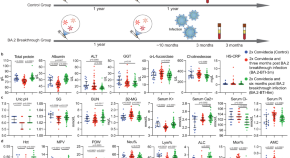
Long-term effects of Omicron BA.2 breakthrough infection on immunity-metabolism balance: a 6-month prospective study
Here the authors study recovery from mild to moderate Omicron breakthrough infection at six months post infection. Serum proteomics, PBMC single-cell transcriptomics and clinical parameters indicate slow recovery with coagulation abnormalities and an imbalance of the immune response and metabolism remaining.
- George Fu Gao
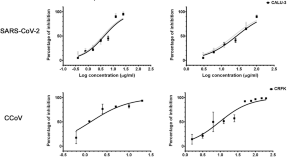
Aesculus hippocastanum extract and the main bioactive constituent β-escin as antivirals agents against coronaviruses, including SARS-CoV-2
- Freddy Armando Peñaranda Figueredo
- Josefina Vicente
- Carlos Alberto Bueno
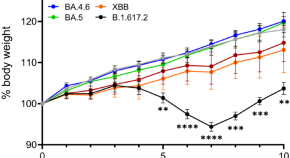
Characterization of Omicron BA.4.6, XBB, and BQ.1.1 subvariants in hamsters
Omicron variants BQ.1.1 and XBB increased pathogenicity in wild-type hamsters, with BQ.1.1 showing higher mortality in human ACE2 transgenic hamsters compared to earlier Omicron variants..
- Peter J. Halfmann
- Kiyoko Iwatsuki-Horimoto
- Yoshihiro Kawaoka
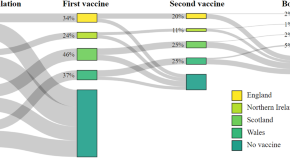
Uptake of COVID-19 vaccinations amongst 3,433,483 children and young people: meta-analysis of UK prospective cohorts
COVID-19 vaccination has been recommended for children and young people (aged 5–17) in the UK since 2021/2022. In this study, the authors use linked health and administrative data to estimate vaccine uptake in this age group and show that age and adult household vaccination status are associated with uptake.
- Sarah J. Aldridge
- Utkarsh Agrawal
- Rhiannon K. Owen
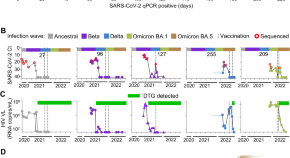
Clearance of persistent SARS-CoV-2 associates with increased neutralizing antibodies in advanced HIV disease post-ART initiation
There is limited data on immune factors contributing to SARS-CoV-2 viral clearance in people living with HIV. Here, the authors show that re-emergence of the neutralizing antibody response may be key to clearing persistent SARS-CoV-2 infection in ART-mediated recovery from immunosuppression in advanced HIV disease.
- Farina Karim
- Catherine Riou
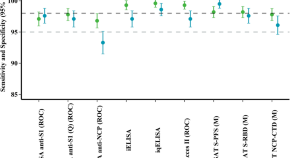
Exploring cell-free assays for COVID-19 serosurvey
- Lucia Inchauste
- Elif Nurtop
- Stéphane Priet
News and Comment

Google AI could soon use a person’s cough to diagnose disease
Machine-learning system trained on millions of human audio clips shows promise for detecting COVID-19 and tuberculosis.
- Mariana Lenharo
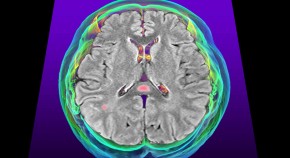
COVID’s toll on the brain: new clues emerge
A leaky blood–brain barrier and inflammation might account for some of the cognitive symptoms of COVID-19.
- Claudia López Lloreda

Massive public-health experiment sends vaccination rates soaring
The rate of vaccination against COVID-19 rose sharply in villages in Sierra Leone where health officials held mobile vaccination clinics.
Speed up relief for long COVID through grassroots clinical trials
- Marc Jamoulle
- Elena Louazon
- Johan Van Weyenbergh
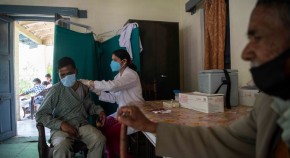
Save lives in the next pandemic: ensure vaccine equity now
The proposed Pandemic Agreement must ensure that COVID-19 vaccine nationalism is never repeated; 290 scientists call for action.
- Colin Carlson
- Daniel Becker
- Alexandra Phelan
Quick links
- Explore articles by subject
- Guide to authors
- Editorial policies
- Share full article
Advertisement
Supported by
New Studies Find No Evidence of Brain Injury in Havana Syndrome Cases
The findings from the National Institutes of Health are at odds with previous research that looked into the mysterious health incidents experienced by U.S. diplomats and spies.

By Julian E. Barnes
Reporting from Washington
New studies by the National Institutes of Health failed to find evidence of brain injury in scans or blood markers of the diplomats and spies who suffered symptoms of Havana syndrome, bolstering the conclusions of U.S. intelligence agencies about the strange health incidents.
Spy agencies have concluded that the debilitating symptoms associated with Havana syndrome, including dizziness and migraines, are not the work of a hostile foreign power . They have not identified a weapon or device that caused the injuries, and intelligence analysts now believe the symptoms are most likely explained by environmental factors, existing medical conditions or stress.
The lead scientist on one of the two new studies said that while the study was not designed to find a cause, the findings were consistent with those determinations.
The authors said the studies are at odds with findings from researchers at the University of Pennsylvania, who found differences in brain scans of people with Havana syndrome symptoms and a control group
Dr. David Relman, a prominent scientist who has had access to the classified files involving the cases and representatives of people suffering from Havana syndrome, said the new studies were flawed. Many brain injuries are difficult to detect with scans or blood markers, he said. He added that the findings do not dispute that an external force, like a directed energy device, could have injured the current and former government workers.
The studies were published in The Journal of the American Medical Association on Monday alongside an editorial by Dr. Relman that was critical of the findings.
The incidents began to occur in greater concentrations at the end of 2016 and in 2017 in Havana and later in China, Austria and elsewhere. The Biden administration took office in 2021 promising to improve health care for diplomats and spies suffering from the symptoms and vowing to get to the bottom of what was causing them.
Studies by the University of Pennsylvania in 2018 and 2019 suggested that people affected by the syndrome had possible brain injuries that were different from typical concussion injuries or other traumatic brain injuries.
The N.I.H. studies looked at a different group of people, with less than a third of the cases overlapping. Dr. Leighton Chan, the acting chief scientific officer for the N.I.H. Clinical Center and the lead author of one of the studies, said that of the 86 participants, 24 cases were from Cuba, six from China, 17 from Vienna, nine from around the United States and 30 from other locations.
While examining the brain scans, the researchers found no significant differences with the control group.
In a news conference discussing the results before their public release, the N.I.H. scientists said their scans, done in a research setting, were more precise than the scans produced primarily in clinical settings during earlier studies. They also said the control group was more closely matched to the study participants, improving the study’s rigor.
Researchers from the University of Pennsylvania said the two studies were “apples to oranges” comparisons because they looked at different groups of patients, and the N.I.H. study was not designed to replicate theirs.
The N.I.H. scientists said they did not diagnose the patients with traumatic brain injuries or concussions. The diagnoses they offered instead, all so-called “ functional neurologic disorders ,” are often caused by stress.
The studies did not rule out a potential external cause for Havana syndrome symptoms. But if one was not involved, Dr. Chan said, stress “may explain more of our findings.”
“It is important to note that individuals with functional neurological disorders of any cause have symptoms that are real, distressing and very difficult to treat,” Dr. Chan said.
The N.I.H. diagnosis angered several people with Havana syndrome symptoms who said it was insulting and misguided because it was tantamount to calling their symptoms psychosomatic or the result of mass hysteria.
Dr. Relman, who was among the leaders of an experts panel established by the intelligence agencies and another by the National Academy of Sciences , said the work of those groups had found that the symptoms of some of the affected government workers could not have been caused by stress or psychosocial factors alone.
The N.I.H. studies looked at a large group of people who reported diverse symptoms, rather than zeroing in on overseas cases where additional evidence shows something strange could have been going on, Dr. Relman said. In those cases, a concealable device, capable of delivering directed energy in a targeted way, could have been responsible.
“To lump all these cases together in the way they did is simply asking for trouble,” Dr. Relman said.
Mark Zaid, a lawyer for several people with Havana syndrome symptoms, said many current and former officials treated at N.I.H. were upset that they were not briefed on the study before it came out. Mr. Zaid said some patients were told that they had to participate in the study to receive treatment from the government for their symptoms. Mr. Zaid said that had raised ethical questions about the patients’ consent.
Dr. Chan disputed that and said that the people who participated did so willingly and could have left the study at any time.
But Mr. Zaid said he feared that the C.I.A. and other intelligence agencies would improperly use the study to bolster their findings that they could not determine an external cause for Havana syndrome cases.
“The concern is that intelligence community is going to weaponize this study to show that the absence of evidence is evidence,” Mr. Zaid said. “And it is not.”
Julian E. Barnes covers the U.S. intelligence agencies and international security matters for The Times. He has written about security issues for more than two decades. More about Julian E. Barnes
- U.S. Department of Health & Human Services

- Virtual Tour
- Staff Directory
- En Español
You are here
Nih research matters, march 12, 2024 edition, 20240312-postpartum.jpg.

Talk therapy cuts risk of postpartum depression
An intervention given to pregnant women by non-specialist providers greatly reduced the chances of developing postpartum depression or anxiety.
20240313-niacin.jpg

How excess niacin may promote cardiovascular disease
Findings about a metabolite of niacin, or vitamin B3, raise concerns about the health effects of too much niacin and suggest new measures to help prevent or treat cardiovascular disease
20240313-antibiotic-resistance.jpg

Designing a new antibiotic to combat drug resistance
Researchers designed a synthetic drug that shuts down protein production in a range of different bacteria.
More Stories
20240305-salts.jpg.
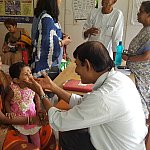
Identifying barriers to life-saving diarrhea care
March 5, 2024 — A study in India found that children with diarrhea often aren’t given oral rehydration salts because providers assume that parents prefer other treatments.
20240305-allergies.jpeg

Drug cuts risk of allergic reactions to peanuts and other foods
March 5, 2024 — Researchers showed that a drug used to treat allergic asthma can reduce reactions to peanuts and other common foods in children with multiple food allergies.
20240305-mecfs-patient.jpeg

Insight into mechanisms of ME/CFS
March 5, 2024 — Researchers compared people with post-infectious ME/CFS to those without and found important differences in their brains and other body systems.
20240227-covid.jpg

SARS-CoV-2 fragments may cause problems after infection
February 27, 2024 — Researchers found that fragments of SARS-CoV-2 left behind after the immune system fights off infection may continue to trigger immune responses.
20240227-blood-test.jpg

Blood test may predict psychosis risks
February 27, 2024 — Scientists identified molecules in blood that may reflect a person’s risk for severe psychotic symptoms and future hospitalizations, and may point to personalized treatment options.
20240227-blood-vessels.jpg

Gaps allow substances to move in and out of the brain
February 27, 2024 — Gaps around blood vessels that cross the layers of tissues protecting the brain allow certain cells and molecules to move between the brain and the body.
20240213-autoimmune.jpg

Understanding sex differences in autoimmune disease
February 13, 2024 — The activity of a type of RNA called Xist may help explain why autoimmune diseases are more common in women than men.
20240213-obesity.jpg

Obesity disrupts mitochondria, reduces fat-burning
February 13, 2024 — Scientists identified a protein that triggers changes in mitochondria that lead to reduced fat-burning to promote weight gain in mice fed a high-fat diet.
20240213-speech.jpg

How the brain produces speech
February 13, 2024 — Researchers identified how neurons in the human brain encode various elements of speech. The findings might be used to help develop treatments for speech and language disorders.
Connect with Us
- More Social Media from NIH
- Australia edition
- International edition
- Europe edition

How Covid lockdowns hit mental health of teenage boys hardest
New research findings are contrary to what had previously been thought about pandemic’s effect on children’s wellbeing
Teenage boys were hit hardest by the Covid lockdowns, with their mental health failing to recover despite the return to normality, according to the most comprehensive academic study of its kind.
Early research into how lockdown affected children indicated that girls had suffered more significant mental health problems than boys.
However, a new study carried out by academics from three UK universities, published in the journal European Child + Adolescent Psychiatry , found that over the long term, teenage boys’ mental health was more adversely affected.
The research followed a cohort of about 200 children, aged between 11 and 14 at the time, asking them and their mothers to assess their mental state. It logged data from each child before lockdown, three months after the measures started and again at 15 months into the pandemic.
Researchers then compared this data with historical records that show the usual pattern of mental wellbeing for boys and girls during adolescence.
The academics found that while both sexes had an immediate decline in their mental health, boys then did not experience the natural improvement in mental wellbeing that usually comes with maturation as they move through the teenage years.
Dr Nicky Wright, a lecturer in psychology at Manchester Metropolitan University and a co-author of the paper, said: “The key message of this is that we expect more boys to be at risk of mental health problems now than we would before [the pandemic].

“Girls, on average, are more likely to suffer with mental health problems than boys. But the girls in the study followed their usual pattern, suggesting the experience of lockdown had a more significant impact on boys than girls.
“There wasn’t a pandemic effect on girls’ depression. When you account for puberty and development, it’s consistent with previous trends,” said Wright.
This weekend marks four years since the first UK lockdown was called on 23 March 2020. Schools were closed, leaving teenagers who were used to spending at least six hours a day surrounded by peers isolated from society. Work set by teachers for home schooling took an average of between two and three hours a day for most adolescents to complete, and with many parents working, lots of teenagers were left alone for long periods of time.
For those who were moving between primary and secondary school during the pandemic years, lockdowns also disrupted integration into new social groups and the chance to form friendships.
For older teenagers, universities and colleges switched to virtual lectures and seminars, leaving new students unable to form bonds with others.
The psychologist and writer Wendy Gregory said the findings of the study echoed changes to her client list in her private practice. “Lockdown has had a horrific impact on mental health, particularly in boys and young men, and partly I’m seeing the results of this now as I’m getting a lot more seeking therapy,” she said.
“There has been a big upturn in males seeking mental health support generally across the age ranges, and for teen boys there has been a huge uptick.”
In south London, Dr Jen Wills Lamacq, a child psychologist who works in state schools, said she has seen the pandemic effect on boys’ mental health first-hand, including increased difficult behaviour. She believes the decline in young male mental health was triggered by the rupture to their lives at a crucial point in adolescent development.
“Lots of boys, to regulate their emotions, may want to be outside, doing something active and around other people, without necessarily talking. For long periods of time, they were deprived of opportunities to regulate their mental wellbeing in a way that comes naturally to them,” she said.
For parents of teenage boys and young men, the findings may come as little surprise. Single mother Rebecca*, from London, says her teenage son, who was already receiving counselling before the pandemic, had a breakdown during lockdown that resulted in him becoming violent and police being called to restrain him.
“He was doing his GCSEs and when lockdown happened at first it was a huge relief because he didn’t have to go into school, as that was a trigger for anxiety, but losing that routine was awful and he had a breakdown. He had a psychotic episode where he was hearing voices. The police came and were very hard with him, and they put him in handcuffs in front of me,” she said.
Rebecca’s son is now an adult and his health has improved from that crisis point, but she says lockdown has had a lasting impact on his mental wellbeing. “I think it was dreadful. I think there will be repercussions for years to come for all kids,” she said.
- Young people
- The Observer
- Mental health
- Medical research
Most viewed

IMAGES
VIDEO
COMMENTS
Mar. 20, 2024 — Artificial intelligence can spot COVID-19 in lung ultrasound images much like facial recognition software can spot a face in a crowd, new research shows. The findings boost AI ...
The results highlight the need to further study erythritol's long-term effects on cardiovascular health. Read more 2023 NIH Research Highlights: Basic Research Insights. NIH findings with potential for enhancing human health include insights into Long COVID and ME/CFS, and a promising blood test for early Alzheimer's detection.
Latest science news and analysis from the world's leading research journal. ... Many with the condition have found ways around their health problems, but they say more employer support is needed. ...
The findings suggest that people can learn to reduce the brain activity causing some types of chronic pain that occur in the absence of injury or persist after healing. 2021 Research Highlights — Basic Research Insights >>. NIH findings with potential for enhancing human health include new drugs and vaccines in development for COVID-19 ...
The 1964 discovery of Epstein-Barr virus shed light on factors that contribute to human cancer. Subsequent studies set the stage for finding ways to diagnose and treat cancer, and revealed how ...
In 2022, these honors included two NIH-supported scientists who received Nobel Prizes. Here's just a small sample of the NIH-supported promising medical findings in 2022. For more health and medical research findings from NIH, visit NIH Research Matters. Printer-friendly version of full 2022 NIH Research Highlights.
Research Open Access 20 Mar 2024 Scientific Reports Volume: 14, P: 6664 Acute effects of low-intensity one-legged electrical muscle stimulation on arterial stiffness in experimental and control limbs
Jan. 24, 2024 — Scientists have found a way to reprogram T cells to fight aging. After using them to eliminate specific cells in mice, the scientists discovered they lived healthier lives and ...
The meeting offers the latest science on population-based health and wellness and implications for lifestyle. Time-restricted eating, a type of intermittent fasting, involves limiting the hours for eating to a specific number of hours each day, which may range from a 4- to 12-hour time window in 24 hours. ... Our study's findings encourage a ...
A team of University of Michigan researchers has successfully modified a naturally occurring chemical compound in the lab, resulting in advanced lead compounds with anti-HIV activity. Mar 8, 2024 ...
ScienceDaily features breaking news about the latest discoveries in science, health, the environment, technology, and more -- from leading universities, scientific journals, and research ...
The "bottom-up" approach of a wide dissemination of information to clinicians, together with practical incentives for stakeholders with competing interests to collaborate, promise to improve women's healthcare. Keywords: research quality, methodology, evidence-based medicine, systematic review. Go to: 1. Introduction.
People with microplastics and nanoplastics in plaque lining a major blood vessel in their neck may have a higher risk of heart attack, stroke or death, new research suggests. The findings ...
Key Points. Question Did patterns of US emergency department (ED) visits and mental health (MH)-related ED visits change during the COVID-19 pandemic?. Findings In this cross-sectional study with 1570 total observations for January 1, 2019, to December 31, 2021, mean total ED visits decreased more than the proportion of ED visits for MH conditions during the weeks after the pandemic was ...
With NIH support, scientists across the United States and around the world conduct wide-ranging research to discover ways to enhance health, lengthen life, and reduce illness and disability. Groundbreaking NIH-funded research often receives top scientific honors. In 2020, these honors included one of NIH's own scientists and another NIH ...
The findings of this new study fit with the Physical Activity Guidelines for Americans, which recommend that adults get a minimum of 2.5 hours of moderate-intensity exercise a week, that's about ...
Public health is the medical discipline concerned with the prevention and control of disease through population surveillance and the promotion of healthy behaviours. Strategies used to promote ...
The Agency for Healthcare Research and Quality (AHRQ), through its EPCs, sponsors the development of various reports to assist public- and private-sector organizations in their efforts to improve the quality of health care in the United States. These reports provide comprehensive, science-based information on common, costly medical conditions ...
Health research entails systematic collection or analysis of data with the intent to develop generalizable knowledge to understand health challenges and mount an improved response to them. The full spectrum of health research spans five generic areas of activity: measuring the health problem; understanding its cause(s); elaborating solutions; translating the solutions or evidence into policy ...
Researchers have found that environmental supports in the first year of life, termed the thrive factor (T-factor), play a crucial role in brain, cognitive, and socioemotional development in ...
Produce prescriptions gained new attention after the 2022 White House Conference on Hunger, Nutrition, and Health made it a priority to improve access to nutrition services for Medicare and ...
As a result, people with chronic stress are at increased risk of a host of ailments including digestive issues, heart disease, weight gain, and stroke. "It's very important to see the mind and body as one," said Rosalind S. Dorlen, PsyD, ABPP, a clinical psychologist in New Jersey. 2. Physical effects of stress can be damaging even when ...
Read the latest research as well as in-depth information on clinical depression, schizophrenia, bipolar disorder, ADHD and other mental health disorders in adults, teens, and children.
Live Science's most-read health stories from 2023 feature Neanderthal DNA, harrowing medical case reports and curious new research findings.
The new research comes with limitations: It relies on people's memories of what they consumed over a 24-hour period and doesn't consider the nutritional quality of the food they ate or how ...
The new study analyzed data on 20,000 people who answered questions about their 24-hour eating habits on two days during the first year of enrollment in a long-term analysis of the health of US ...
SARS-CoV-2 is a positive-sense single-stranded RNA virus. It is contagious in humans and is the cause of the coronavirus disease 2019 (COVID-19). A trial that took mobile health services to rural ...
The findings from the National Institutes of Health are at odds with previous research that looked into the mysterious health incidents experienced by U.S. diplomats and spies. Share full article 33
Findings about a metabolite of niacin, or vitamin B3, raise concerns about the health effects of too much niacin and suggest new measures to help prevent or treat cardiovascular disease 20240313-antibiotic-resistance.jpg
New research findings are contrary to what had previously been thought about pandemic's effect on children's wellbeing Hannah Fearn Sat 23 Mar 2024 12.00 EDT